|
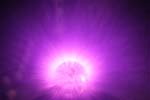 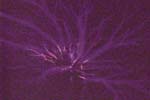
Flat Spiral High Frequency Coils Used To Decipher Century Old
Electrographs,
Resurrecting Old Technology To Bring New Studies to Lichtenberg Figures
Under Normal Atmospheric Conditions
Jeff Behary, with Ultraviolet
Photography (C) Dr. Daniel Cuscela, 2012
The following images and texts are the result of an investigation
regarding several hundred 8" x 10" and 11" x 14" glass plate negatives of electrical discharges
or "Lichtenberg Figures"
made from 1895-1902, recovered from the former home of electrical and
X-Ray pioneer Thomas Burton Kinraide in 2005.
After finding the glass plate negatives, efforts were made to preserve
them by first removing a century of mold and mildew carefully from the
decaying emulsions abandoned more than a
century prior. The negatives were placed flat and separated in a
spare bathroom, and bombarded with UV radiation from a small germicidal
lamp. The offensive smell of mildew from the rotting
paper envelopes soon dissipated, and once dry faint pencil descriptions
became visible on some of the envelopes that were previously thought to
be little more than soiled remains. Many negatives,
in fact a majority, had most of their emulsion washed from flooding and
improper storage over the years.
One of the most striking things about the beautiful intact plates were
large photographs of thick branching sparks with an apparent thickness
of 1/2" or more. In 2007, in visiting one of the
surviving
Kinraide family member's home, I witnessed original 22" x 28"
prints of Lichtenberg Figures with similar thick branching sparks.
On the back were hand-written lecture notes, with the words "Not Enlarged".
The plates were all said to have
been made with variations of the Kinraide Coil, a form of bipolar
Pancake Coil. I questioned in my own mind how such thick
sparks could be actual size...?
The general consensus of the Tesla Community were that the photos were
the result of slow photographic emulsions used in that period - and
possibly did not represent an accurate picture
of how the discharges appeared in person. This seemed like a
logical conclusion. However, the time difference would not account
for thick discharges that receded to minute details. Such details
should
be lost if the exposure times were necessarily long.
Many were skeptical in
general, and understandably, as in the decades following the late 1890s
medical Tesla Coils were often closely linked with quackery -
and gross misrepresentation of the facts were a common way to promote
sales of machines. These initial conclusions were
plausible: no experimenter had actively witnessed in modern times
discharges of these unusual forms and shapes. The study of
Lichtenberg Figures in general is obscure, and typically is done under
highly controlled conditions using direct currents.
Most often air or vacuum chambers are used in conjunction with specific
volumes of gases that lend themselves to producing various forms of
discharges. The few period references of Kinraide
would later point out fairly instantaneous images made by simply
balancing the plates on top of his coils and for an instant throwing the
switch.
This is where my research began - I too had more questions than answers,
but also had hundreds of photographs that represented
"something". Surely there must be a logical explanation
of
their existence!
One of the greatest finds was with the assistance of Danish Tesla Coiler
Finn Hammer. He helped me to secure original uncut copies of Peder
Olaf Pedersen's books "On The Lichtenberg Figures",
published by the Danish Royal Academy during the late teens and early
20s. Pedersen was a close associate of Valdemar Poulsen, a high
frequency pioneer of high current DC arc transmitters.
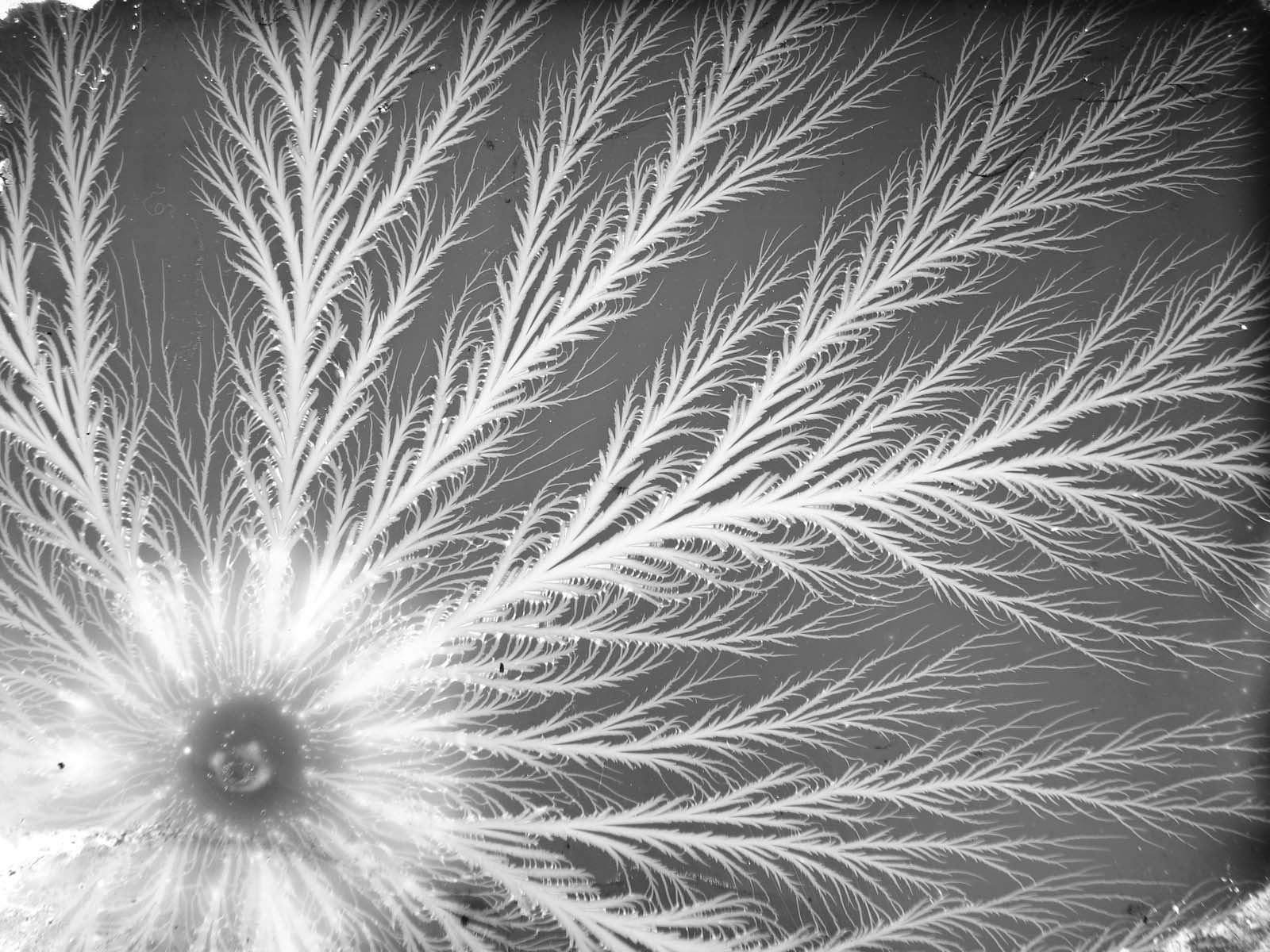
Original Kinraide negative "Filiciform
Discharge" - showing
"Pure positive" discharges according to Pedersen.
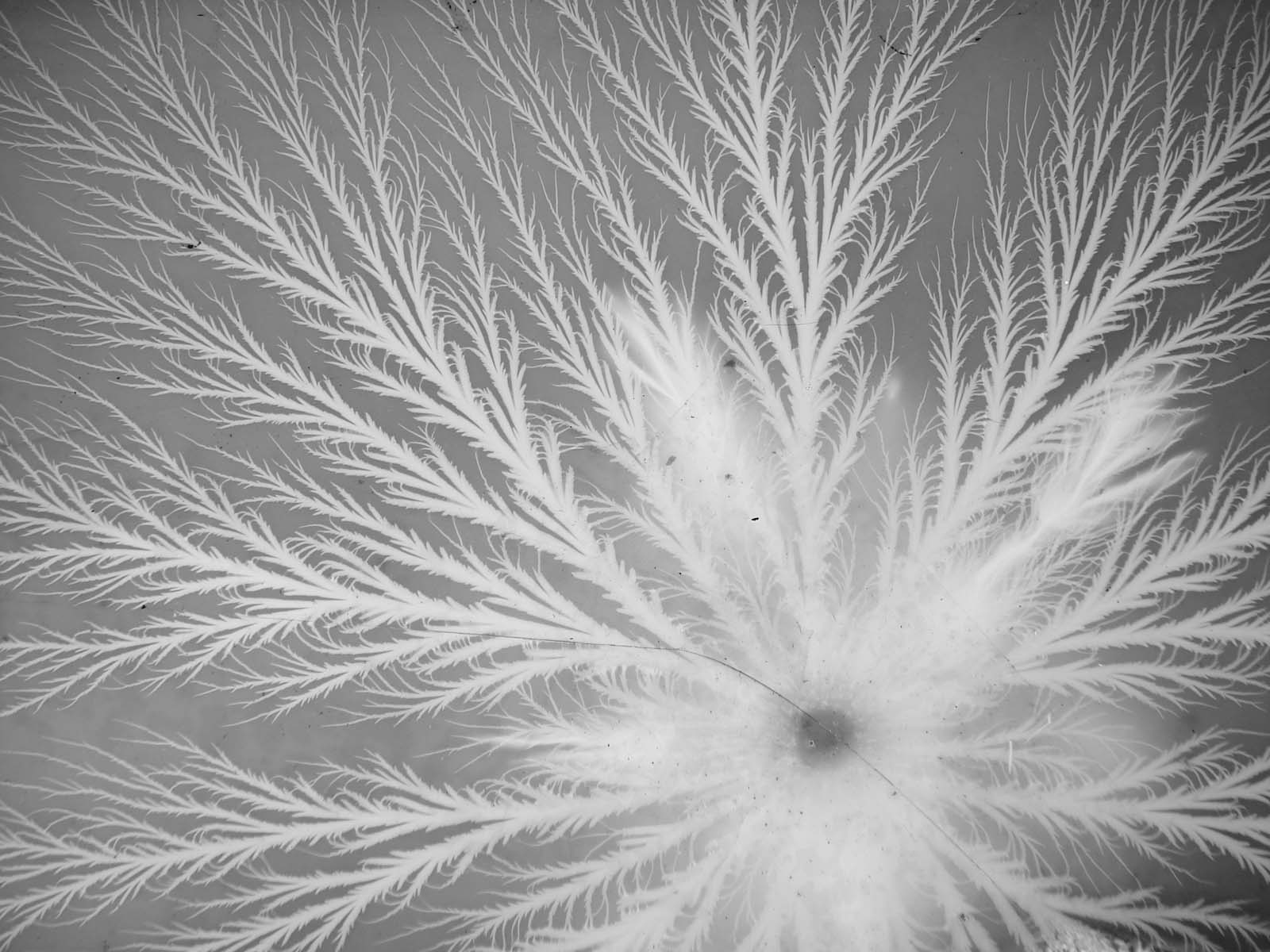
Original Kinraide negative - Positive with "irregular discharges",
according to Pedersen.
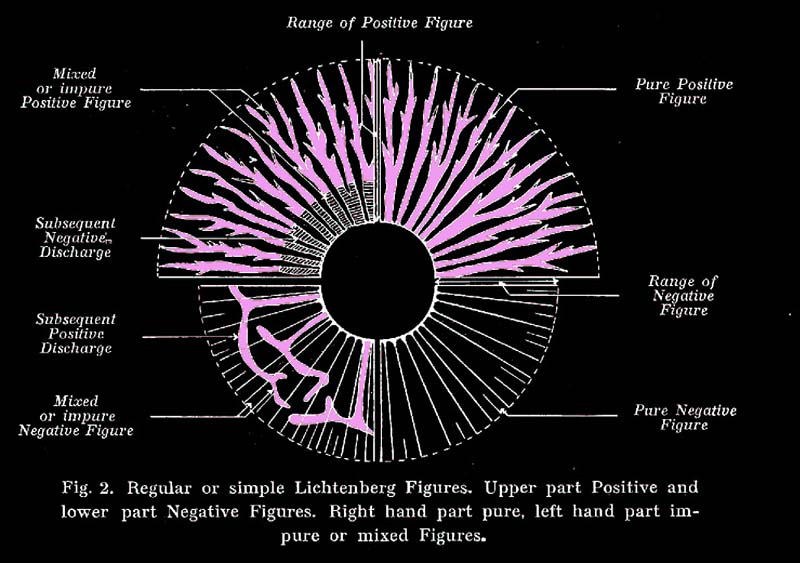 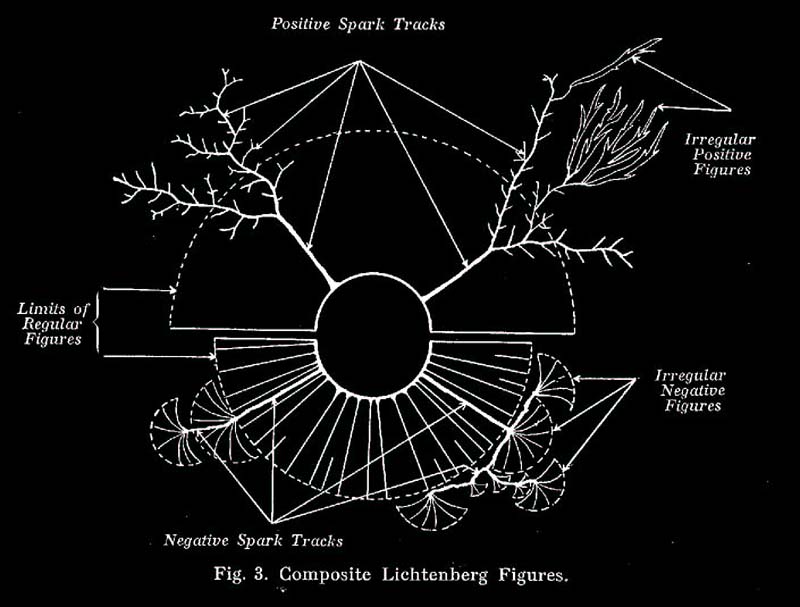
From ON THE LICHTENBERG FIGURES, Peder O Pedersen, Part III On The
Positive Figures
Det Kgl. Videnskabernes Selskab, Royal Academy of Denmark
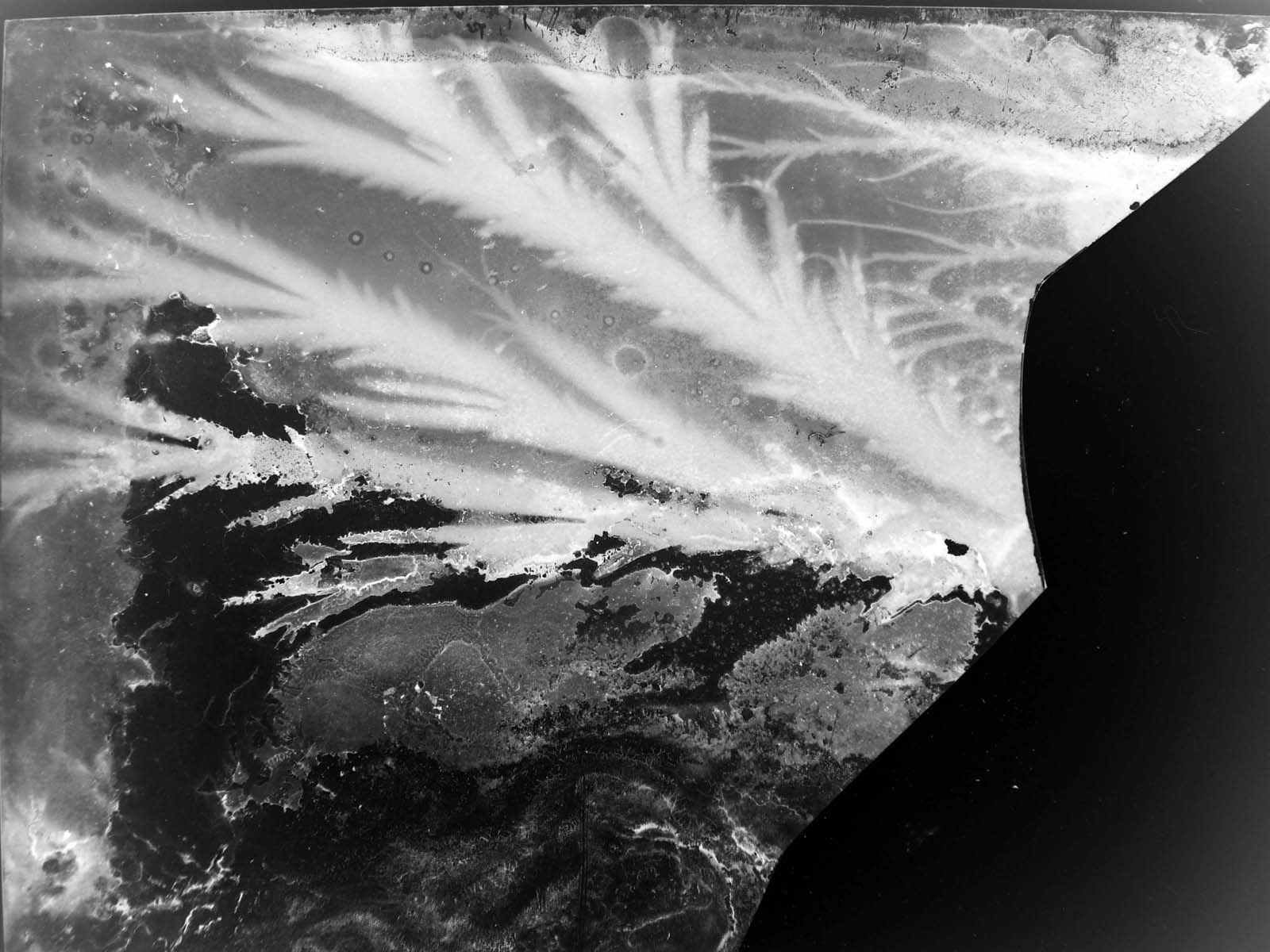
Original Kinraide negative showing positive streamers greater than
1/2" in thickness. (Original plate 11x14", damaged)
In Pedersen's work, the thickness of Positive branch formations were
specifically linked to atmospheric pressure - For example, drawing a
slight vacuum widens the sparks. Certain gas mixtures
or ratios also promoted the formations to change thickness.
In the literature accompanying Kinraide's second commercial machine,
"The Jackson Coil", the booklet's description of the
discharge seemed almost absurd. As of first reading that
description, I am now resigned to say that my own prejudiced opinion
prevented me from finding my answers much quicker!
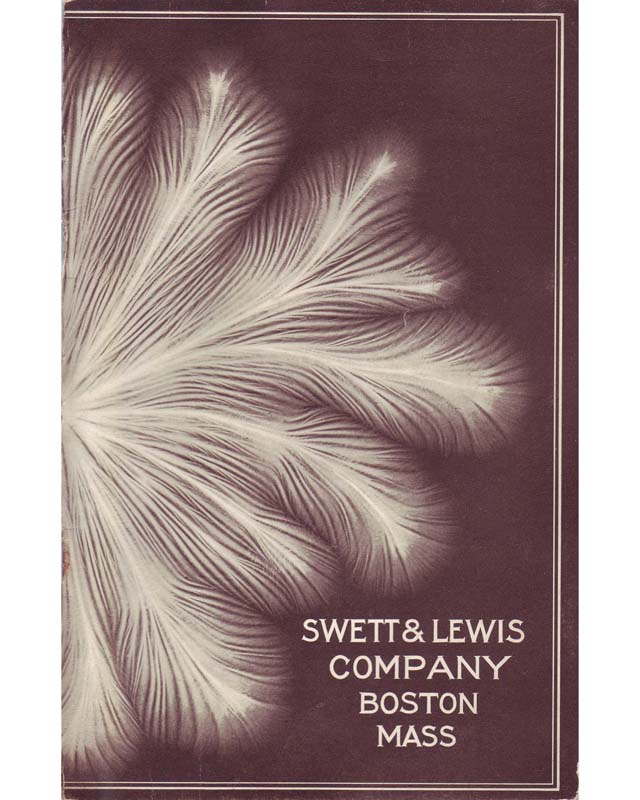 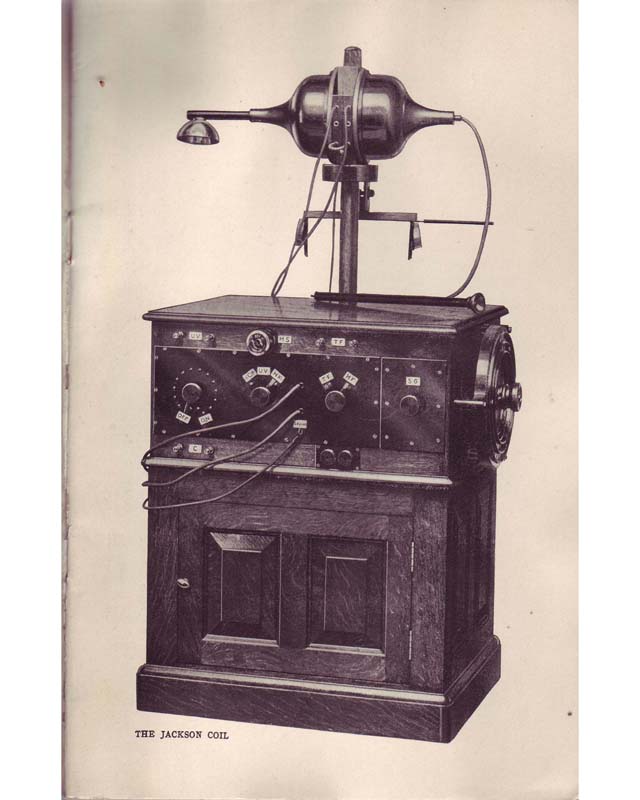
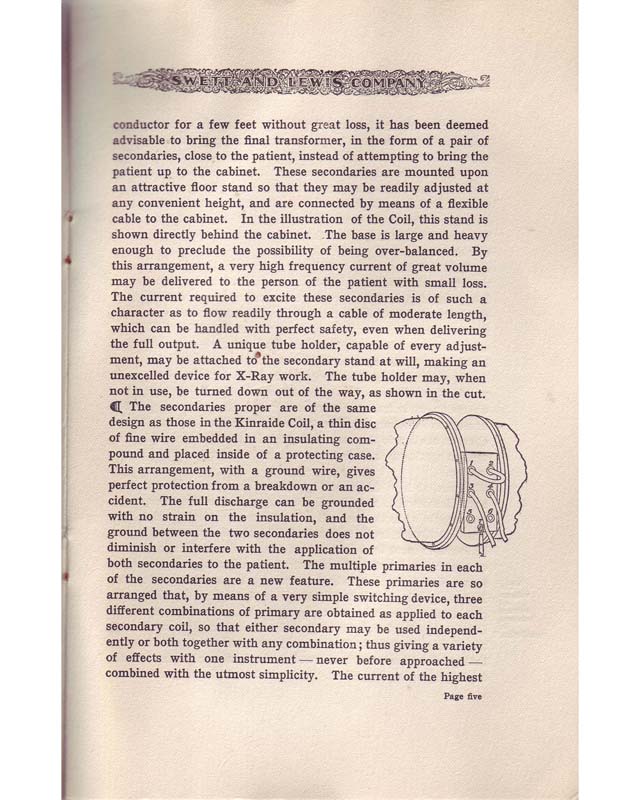 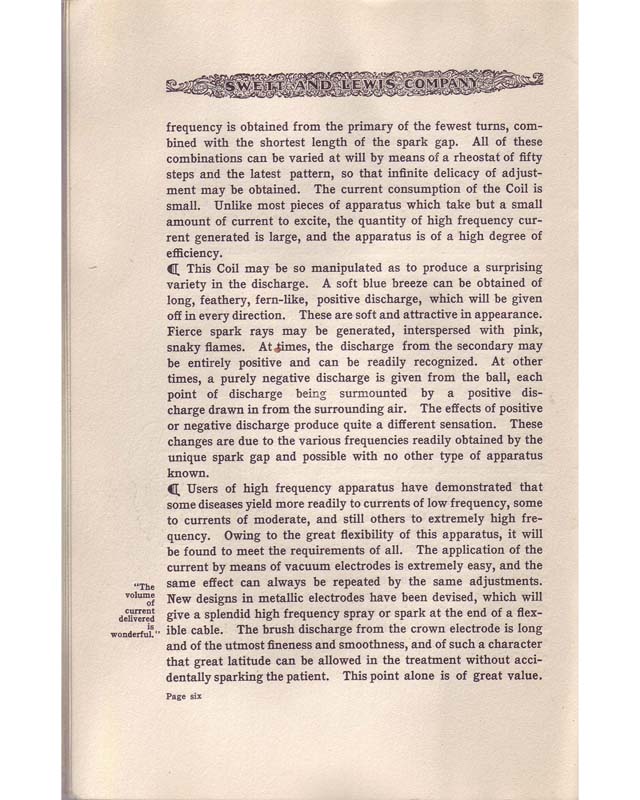
The literature implies that the polarity of each coil changes
independently based on the settings of the spark gap. As all Tesla
Coils give oscillatory discharges, this seemed
impossible. However, in researching more outside literature
written from doctors about this machine, there were certain curious
features that seemed intriguing. The first was
the main claim for fame of this apparatus - that it produced a static
breeze that rivaled that of a large static machine. Oudin
Resonators powered from large (12-24") induction coils
were often cited as producing breezes, but a small Pancake Coil would
not seem a fair competition to this sort of output. I can honestly
say now that this assumption is completely wrong!
The original literature to the Jackson Coil mention a few things that
are paramount in the production of these streams and the replication of
the photographs: One, is the 50 point Rheostat.
Being able to vary the current in small steps is key. Second, the
spark gap adjusted by a micrometer screw. The combination of these
two features alongside a flat coil of few turns of wire is pivotal:
It took me several years to work this out.
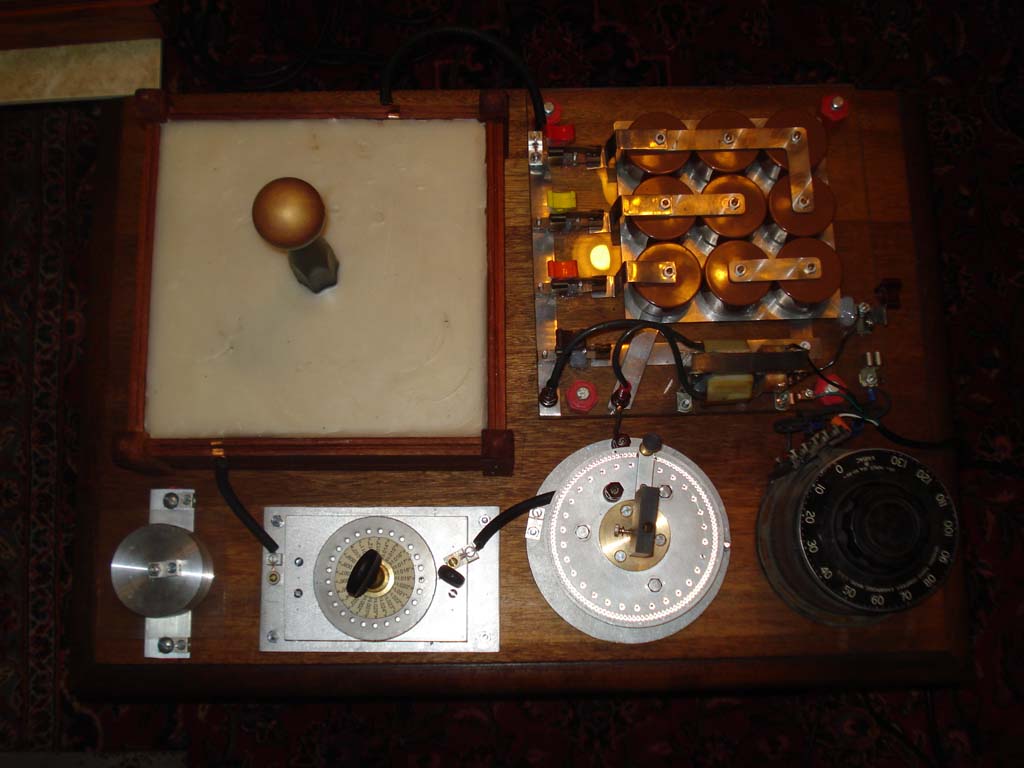
2010 Experimental Apparatus
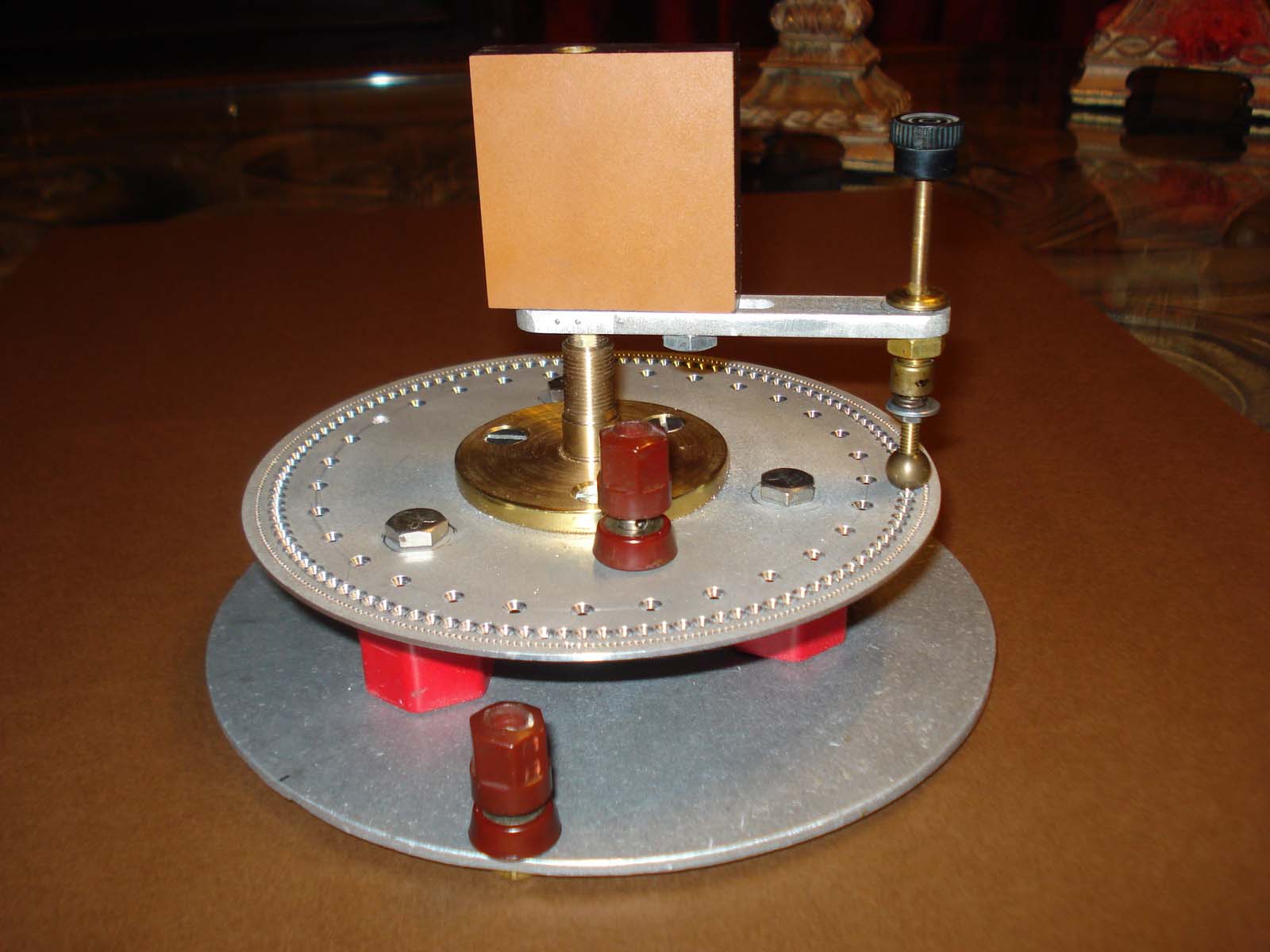
The earliest experiments I made were with flat spiral Tesla Coils
running from 3500V 30 mA neon sign transformer circuits. I noticed
that when low powers are used the coils produce an incredible
effluve of "Phantom Streams" as mentioned in early Tesla
lectures.
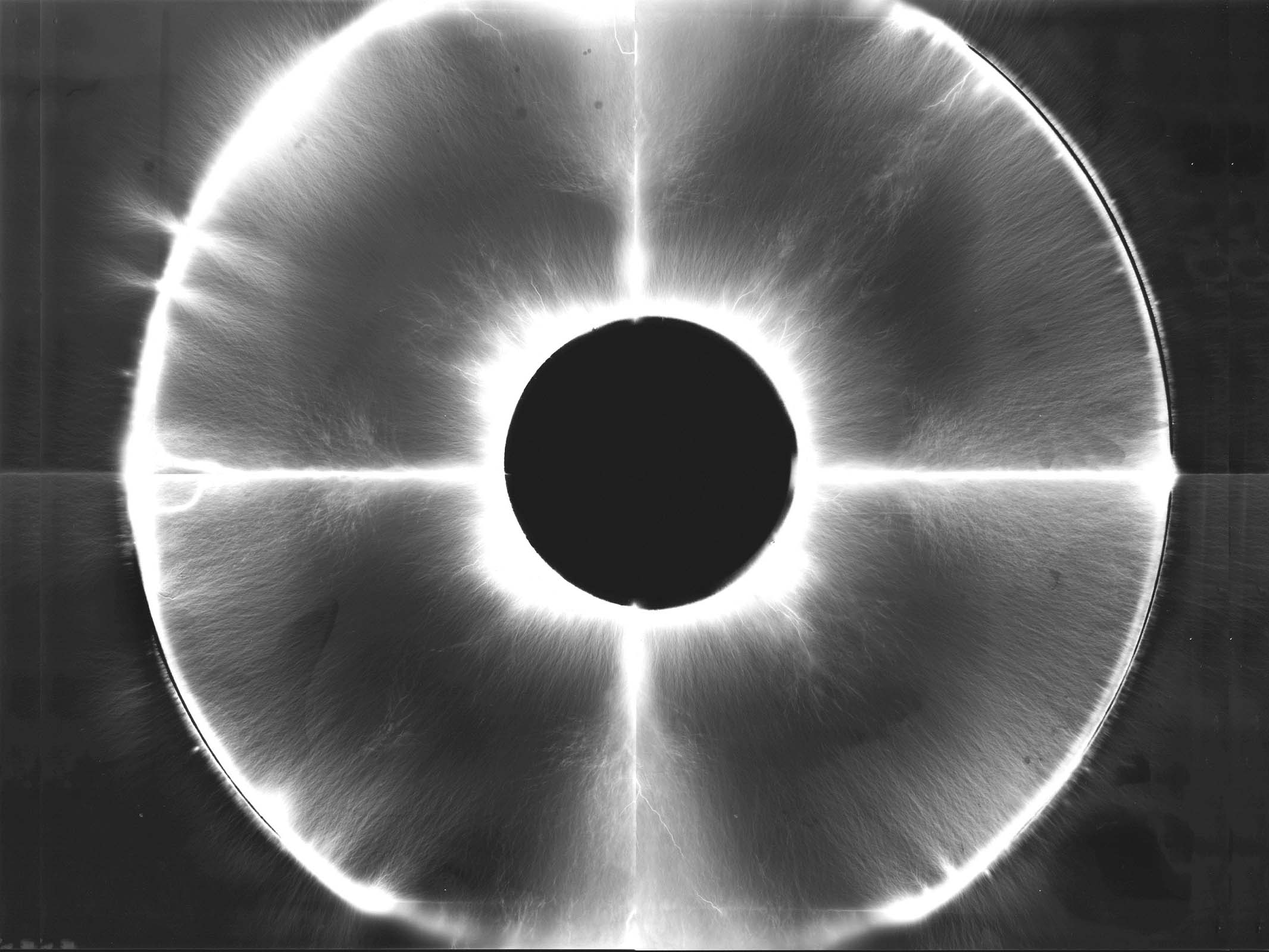
Electrograph made in 2005 using a metal plate and loop of magnet wire
connected to a bipolar Pancake Coil system powered by 90 watts.
Replication of Tesla lighting experiment, my first study of
"Phantom Streams" and effluves directly on photographic paper
(4 sheets, 8x10").
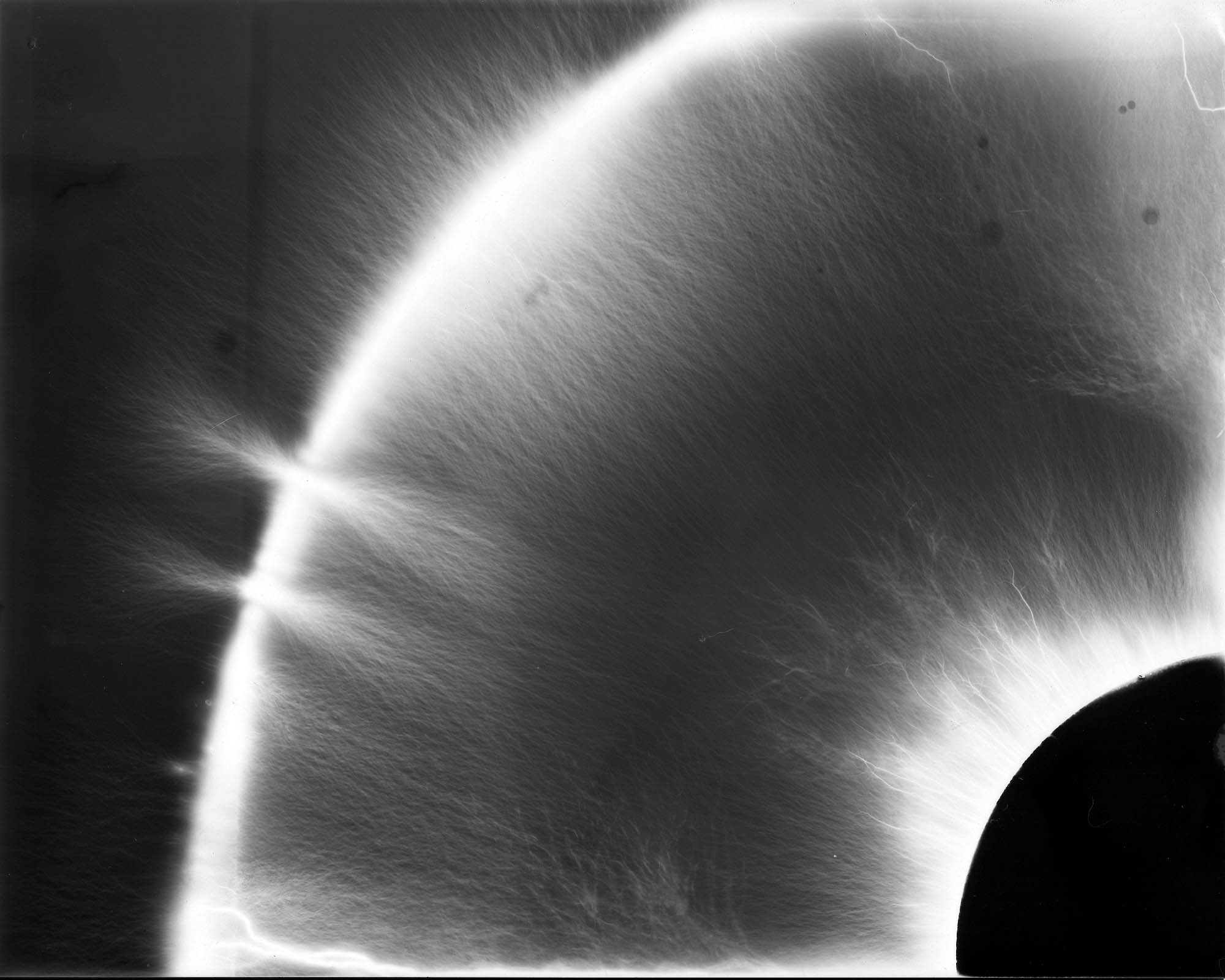
An enlargement of one quadrant
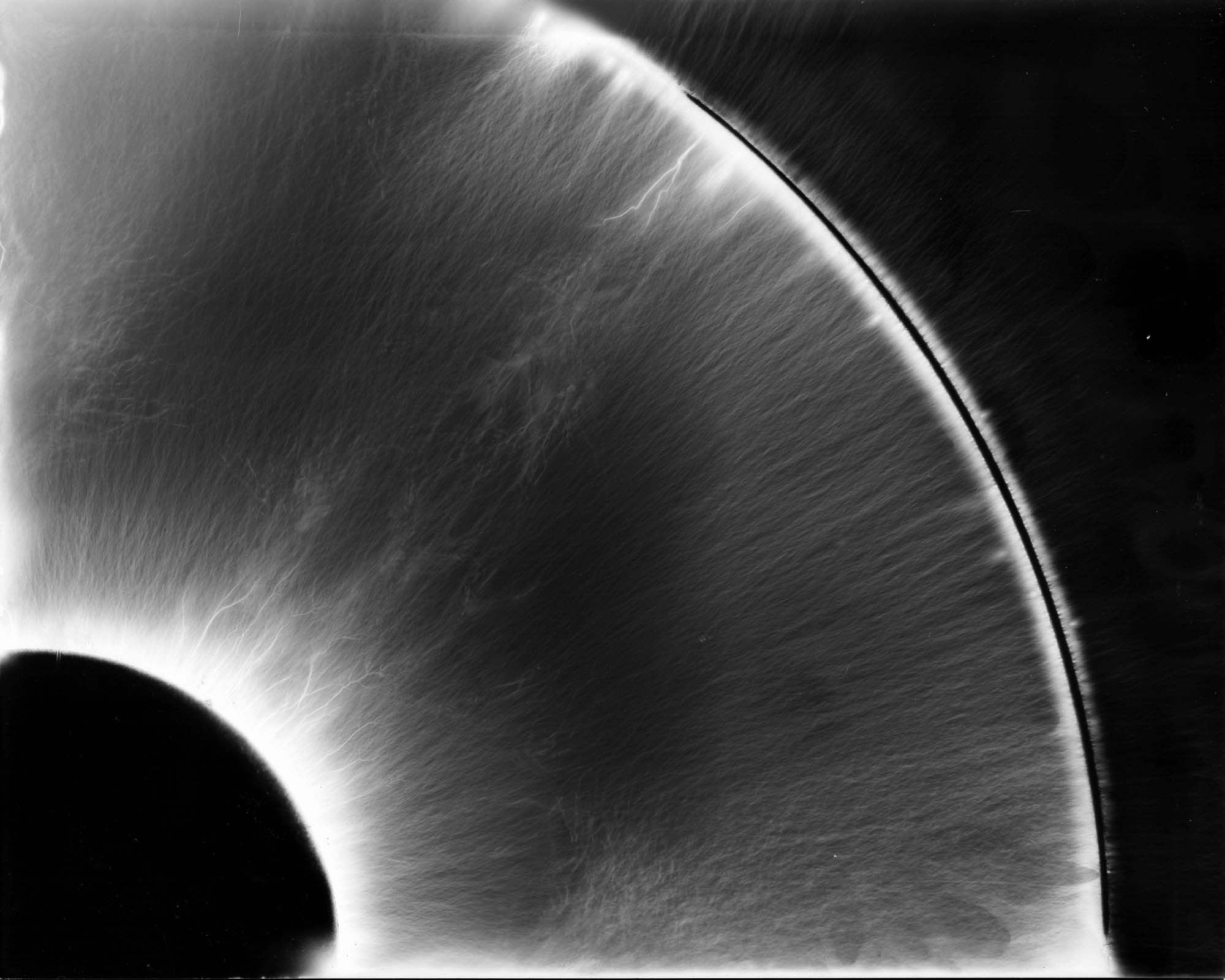
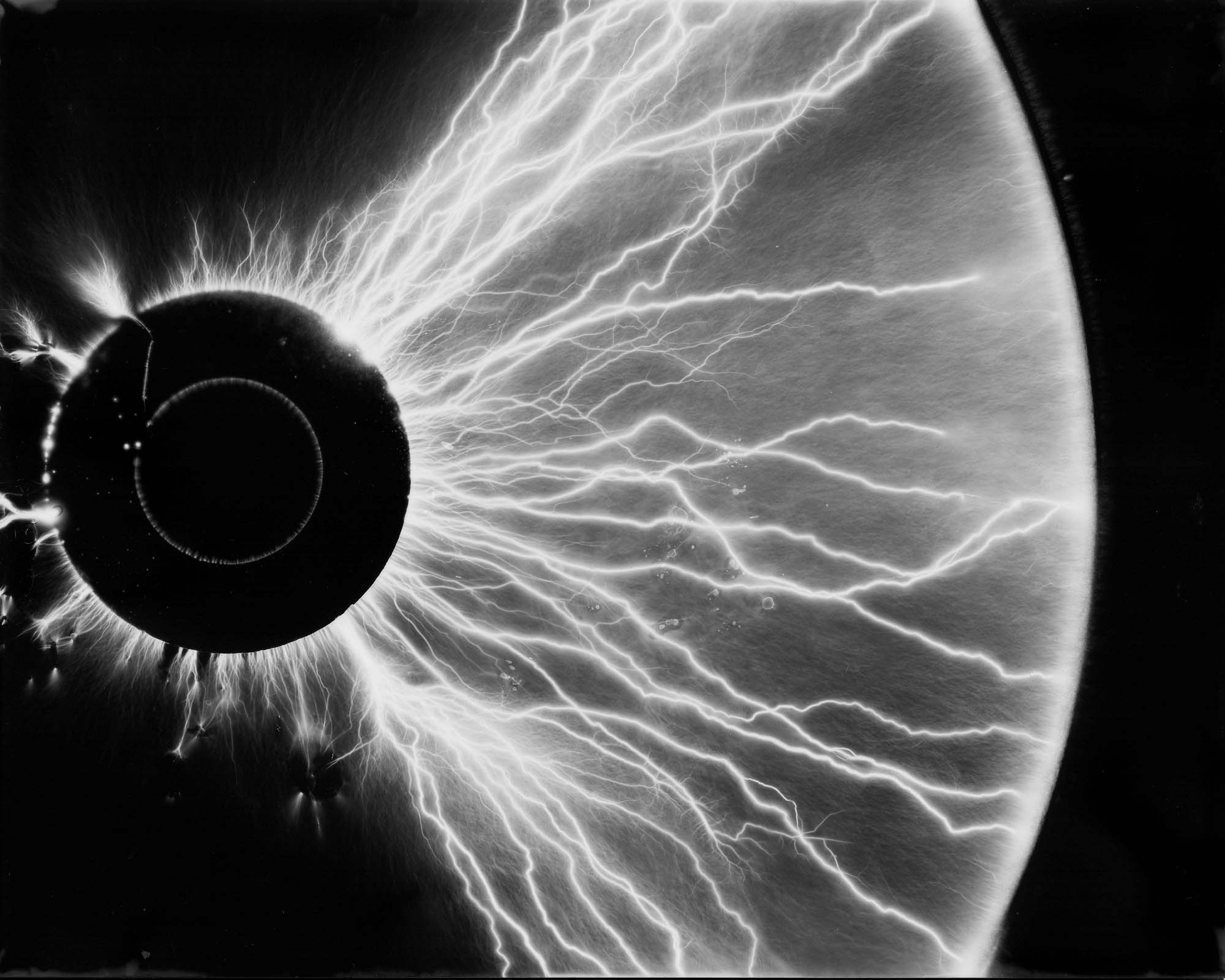
Appearance of sparks when the spark gap was opened too wide
I rekindled these experiments before the birth of my daughter in hope to
put a close to the countless hours of studying sparks! This time,
the spark gap adjustments seemed to do a lot more than
previously appreciated. As the spark gap was opened wider, these
streams typically were overtaken by sparks. The effects were
curious though of
the "Phantoms", and intrigued led me to experiment further
with them. One day I added a simple variac to the circuit, and on
rotating the knob to 50 or 60V the gap started to fire and I noticed
something
completely different - the typical "Phantom Streams", which
appear as faint straight lines radiating from the terminal, transformed
themselves into branching discharges. This was an astonishing
sight,
as the forms looked identical to Kinraide's photos - only thinner.
As I opened the spark gap, the branched forms gradually changed back to
radiating lines. As this happened, the sounds from the spark gap
also changed - as well as the sounds of the sparks or streams
themselves. As the streamers quivered around, the sounds were
similar to the breakout noise heard when operating a van de graaf
machine.
As neon sign transformers don't always work on a full range using a
variac, I decided to make a micrometer spark gap. I invented a gap
based loosely on the dividing head used for precision milling.
Rather than controlling precise rotary movement of a worm gear, I
attached the dividing head to a micrometer machine screw 5/16" in
diameter, having 40 threads per inch. This screw allowed the gap
to be adjusted .025" for each full rotation. By using 25
holes around the dividing plate, each rotation of the plate would adjust
the gap .001". In testing the apparatus, the sparks appeared
different -
specifically around the ball terminal of the coil. A thousandth of
an inch greater or less had an effect on the appearance of the streams,
and from a nearly closed position to the maximum point where
the spark gap would start sputtering intermittently represented a wealth
of visual curiosities.
The sounds of the spark gap over the full working range of the apparatus
were most curious. The streamers themselves also produced some
varying pitches that corresponded to a softer extent
to the sounds of the spark gap. Tesla's use of the words
"Phantom Streams" was certainly accurate from a psychological
point of view. Finding it difficult to tear myself away from the
intriguing
streams often left me in a state appearing to have witnessed the
traditional form of "Phantoms"! The struggle to see
faint and continuous strobing discharges combined with an over caustic
environment of ozone and nitric acid in the air, the constant screeching
and sputtering of white noise from sparks and streamers, and the typical
eerie sounds of living in the ghetto
of West Palm Beach was enough to leave me in a haunted state most
evenings, or even perpetually when sleep deprivation was taken into
account...
My next dividing head spark gaps had 180, 240, and 360 holes around the
edge - The accuracy of the gap changed from thousandths of an inch to
suddenly
ten thousandths of a inch and beyond. The 360 hole plate limits
the voltage in increments of 1/14400th of an inch, roughly 70 millionths
of an inch per "click" opened or closed.
This gap allowed me to see the most minute details of the sparks, and
often I would witness what Pedersen called "irregular"
positive sparks, where negative plumes were seen to form
before the positive, or the widening of streams near the ball terminal
which would appear unusually leaf-like in appearance and were terminated
in positive figures.
For two years, I tried to no avail to document these streams using now
traditional digital photography.
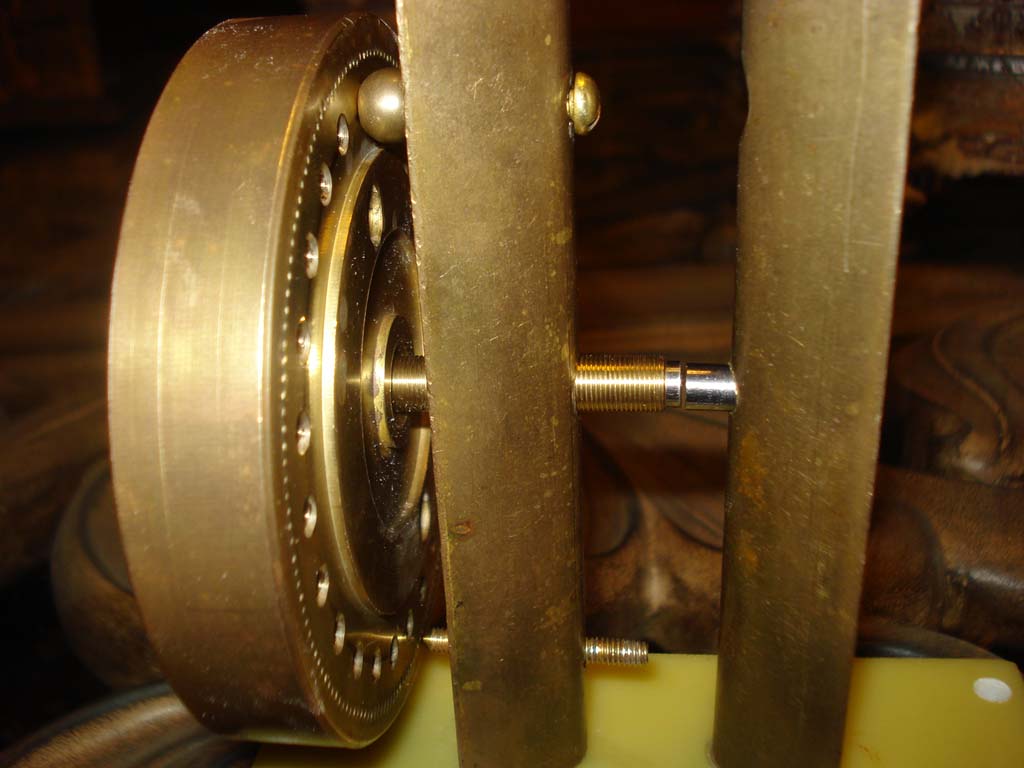
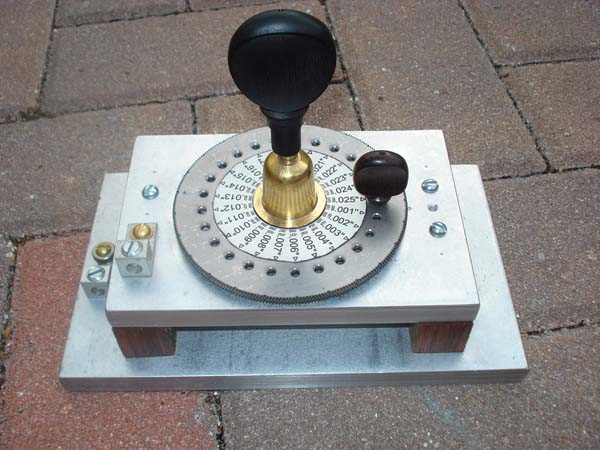
Thanks to Daniel Cuscela, a board-certified Radiation Oncologist, fellow
collector, and new friend local to South Florida, I have had the
opportunity of a lifetime to try and photograph the sparks using
an Ultraviolet Camera. The blurred photo below shows streams,
10-12" in length, that form completely surrounding the ball
terminal and extending out in all directions. They have an
apparent thickness
of 1/2", as in the Kinraide originals, and when viewed up close
have the identical formations as the black and white glass
negatives.
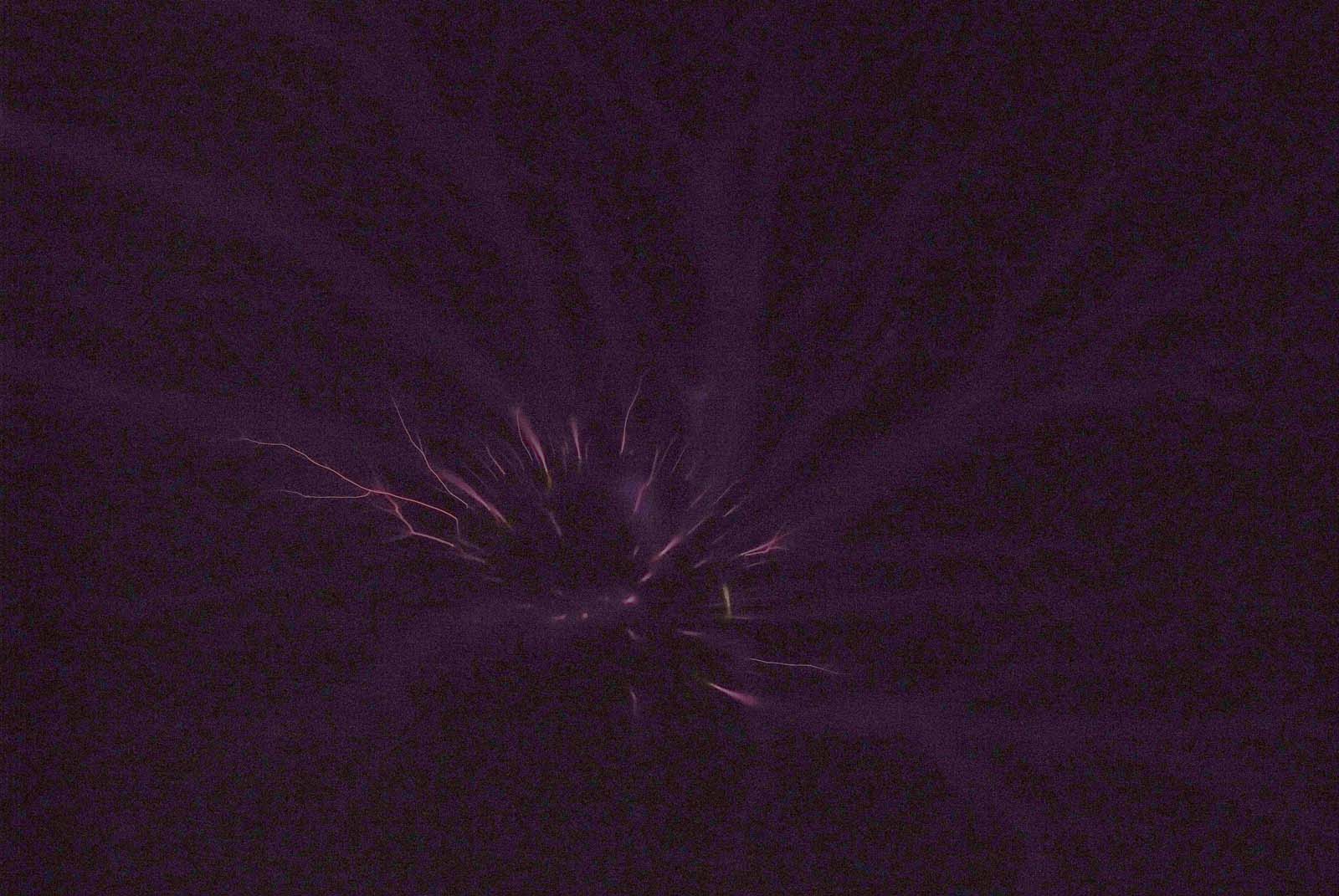
Faint but visible discharges 1/2" thick
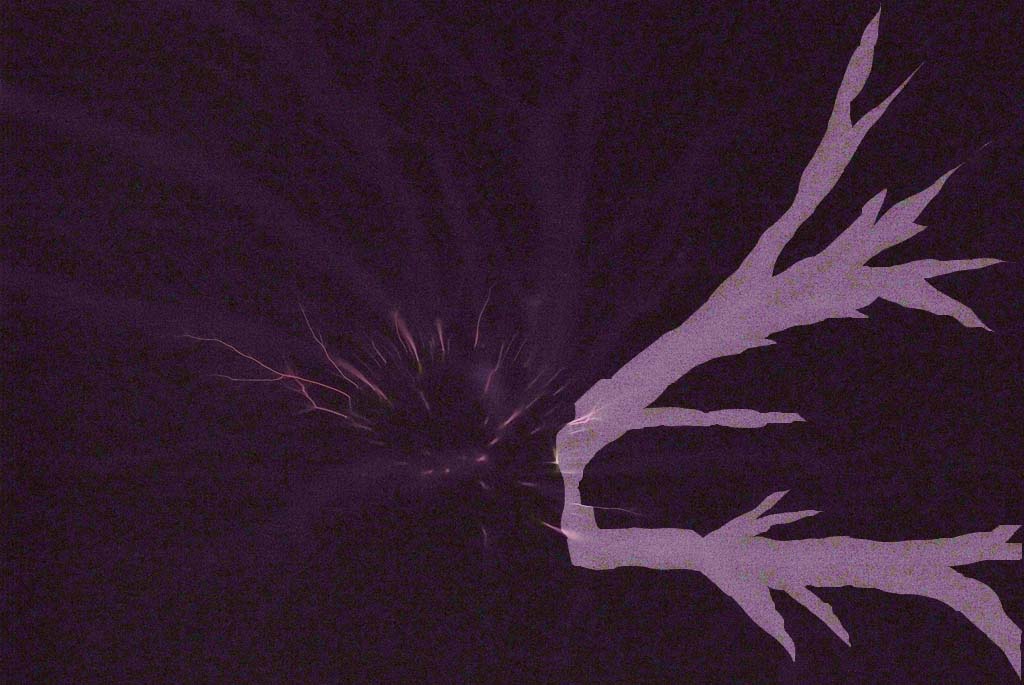
Faint tracing computer enhanced
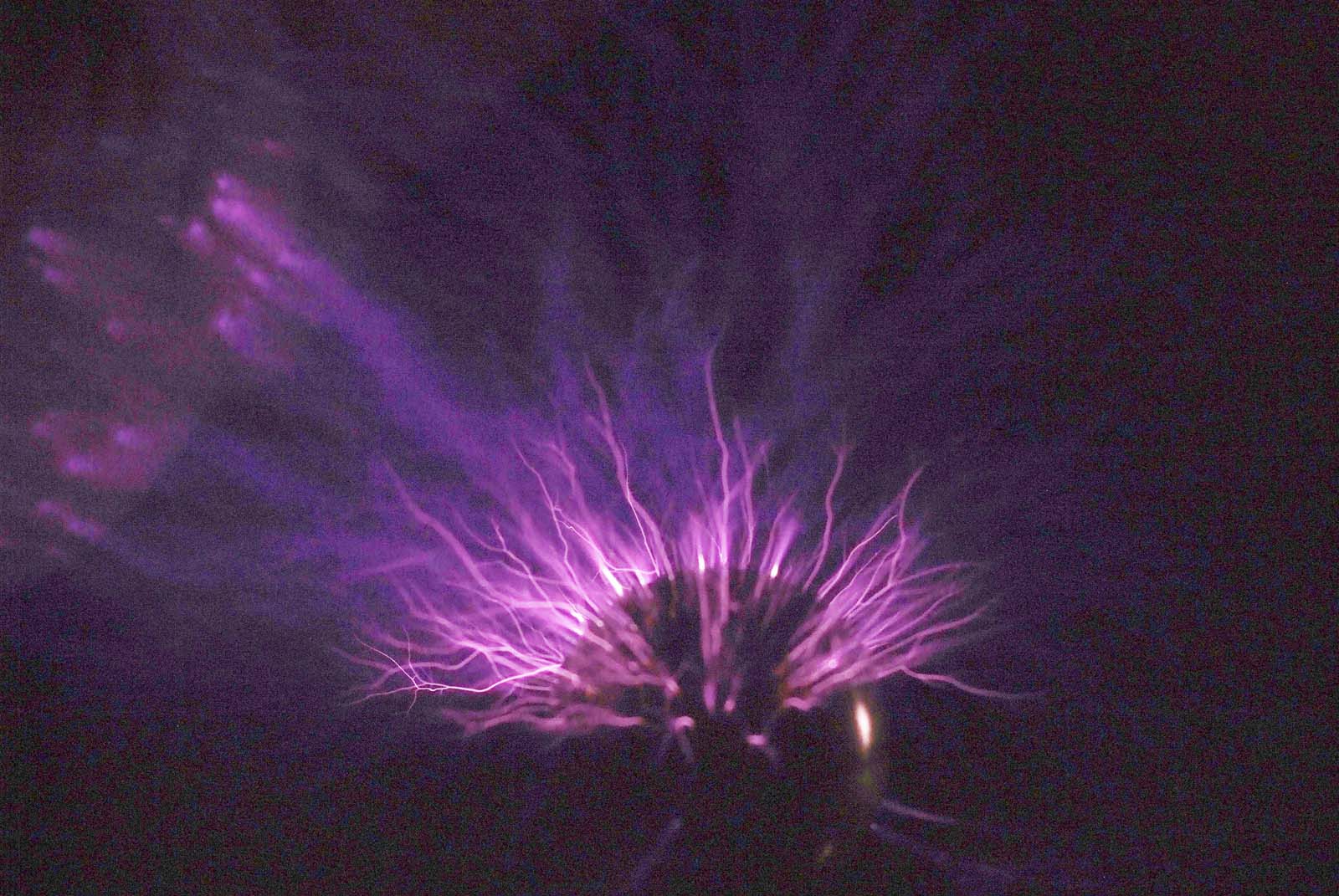
Streams directed to the palm of my hand
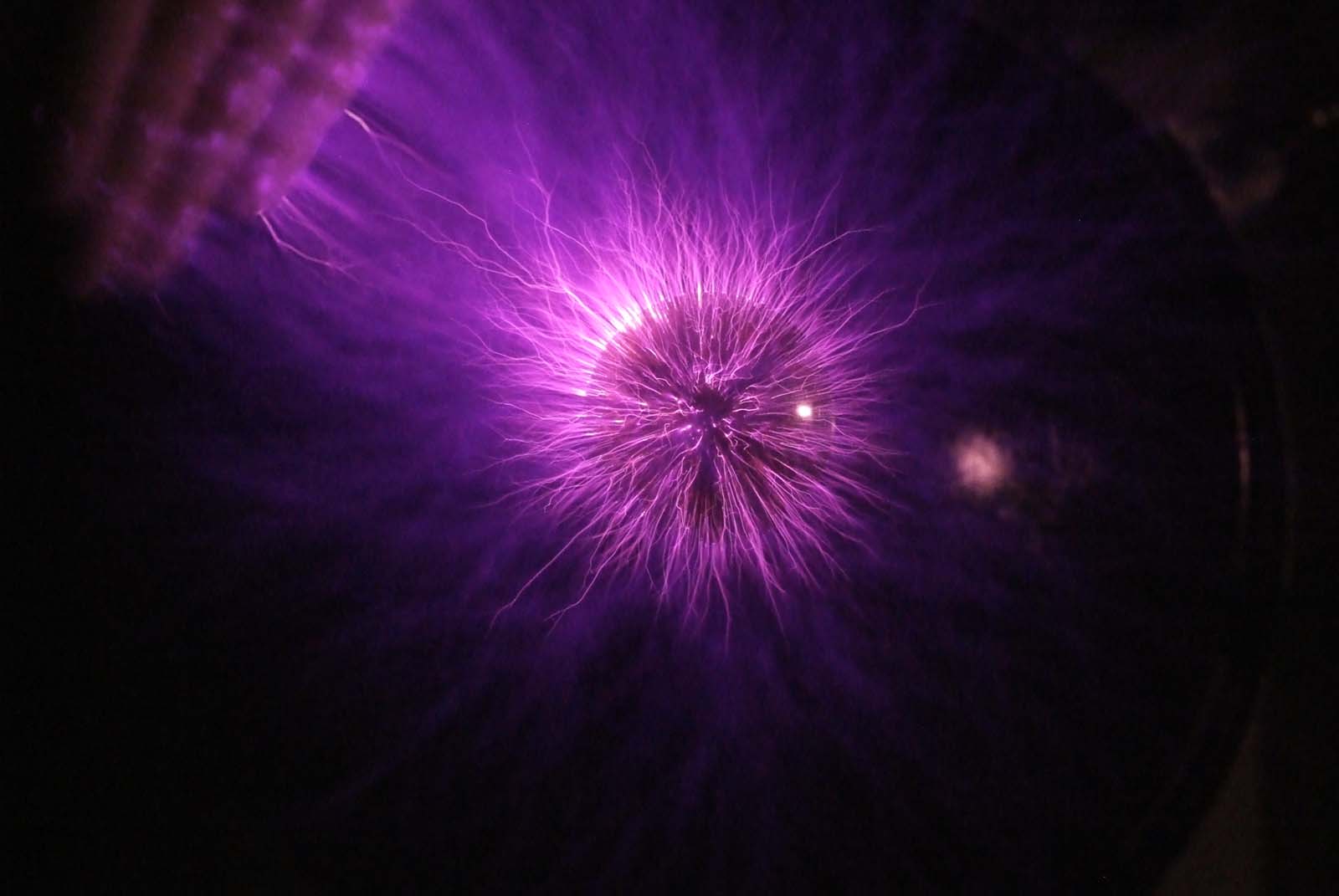
Longer exposures with high ISOs (1000, 2500, 3200) show the brilliance
of these streams as witnessed by the naked eye - and still, even with a
UV camera that cost as much as a new car,
we are only capturing about 70-80% of what our eyes see when standing
amidst the streams or in close proximity. The streams have
properties similar to black light, and white printer paper or xerox
paper will glow in the paths of the streams or even at moderate
distances from the coils.
Bert Hickman has been an invaluable help in providing me with modern
articles on this subject matter:
"The UV radiation you're seeing is from exited N2 molecules and N2+
ions
as they drop back down to the ground state. These are created during
avalanche breakdown of air. The resulting UV radiation photoionizes
oxygen molecules ahead of the streamer head, providing a source of
secondary electrons. Photoionization is an essential part of the
propagation process for positive streamers.
I'm amazed that the UV radiation from your faint streamers was bright
enough to cause the brightening agents in white paper to fluoresce 12
feet away! It is known that the UV radiation associated with corona and
propagating cold streamers is in the range of 980 - 1025 Angstroms (98 -
102.5 nm). These are very energetic photons with an energy of 12.1 -
12.65 eV - short wave UV. This corresponds to the high energy end of
germicidal lamps, and is quite sufficient to ionize oxygen and generate
ozone..."
The ozone produced by these coils even at only 30 watts of power is
enough to fill the room
I am experimenting in (8' x 16') . I am unsure of the percentage
of ozone vs. nitrous acids.
This is highly useful information from Bert. Over the last few
years I have experienced erythema on my arms from
passing them repeatedly through the streams. While there is little
pain felt by the streams there is a bombarding or prickling
sensation on the skin. It is similar to the intense static breeze
applied through wool at close distances from a 24-Plate
Toepler-Holtz Static Machine. The erythema, if continued, produces bumps, followed by blisters and
burns.
The streams, though dim, likely also posses the ability to desiccate or
dehydrate tissues in the same way cold sparks do.
(Kinraide said in July 1901 that he experienced all of the bad symptoms
of X-Ray burns from his apparatus
without any X-Ray tube being attached...he attributed this partly to
intense nitric acid production by the streams...
the acid became bad enough in Kinraide's lab that it collected on nearby
objects...he remarked that at times it was
so bad he had to find ways of collecting it ).
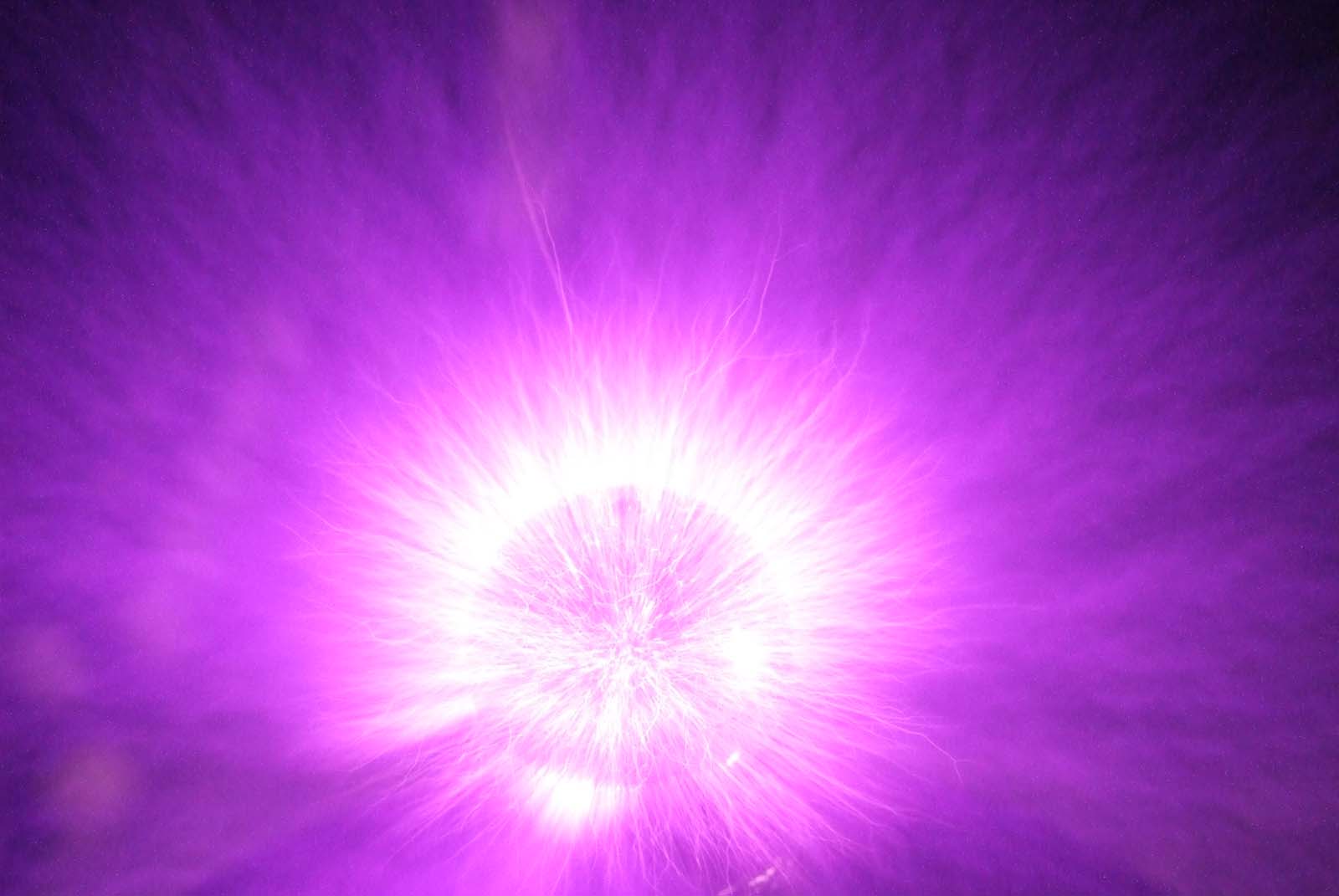
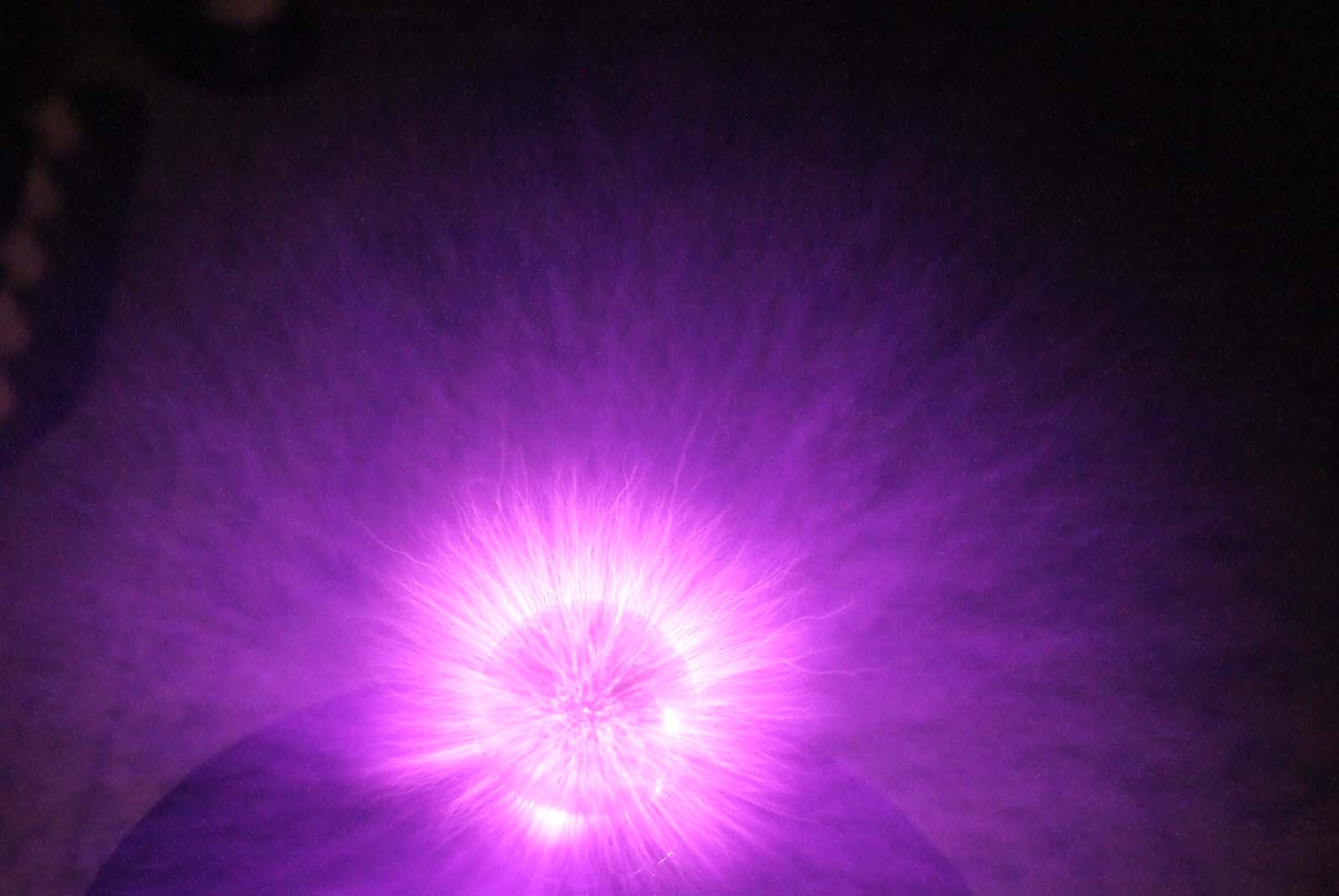
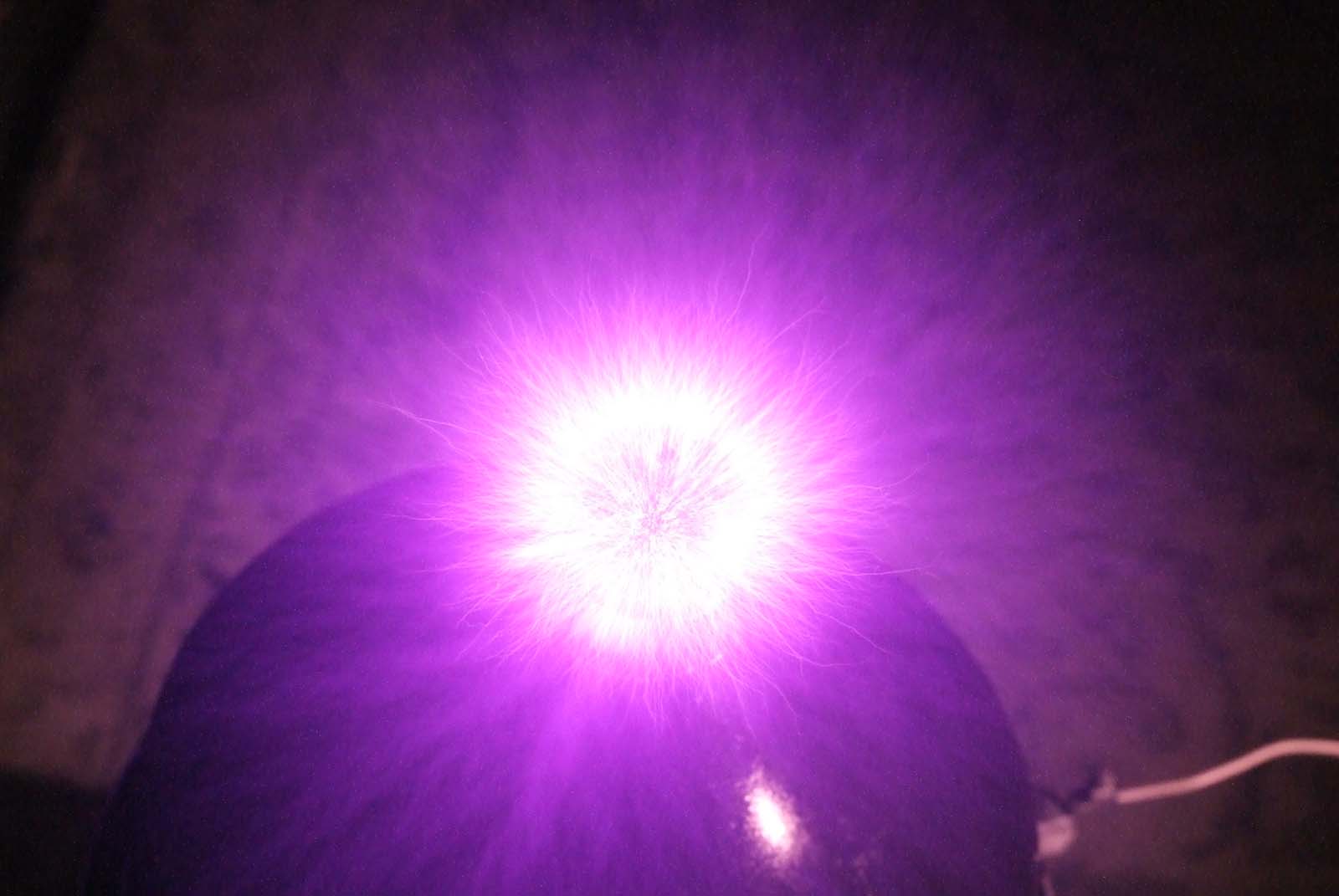
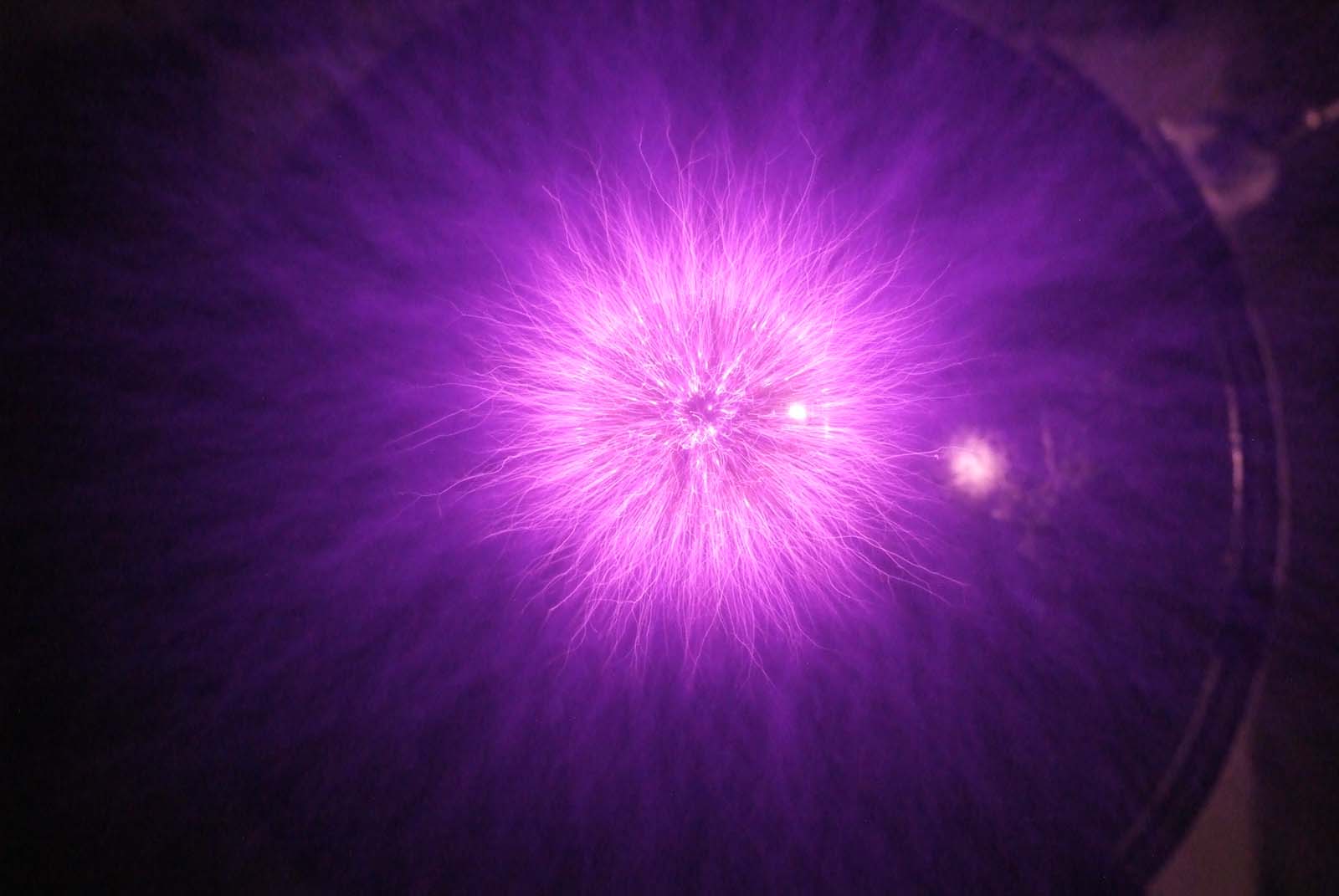

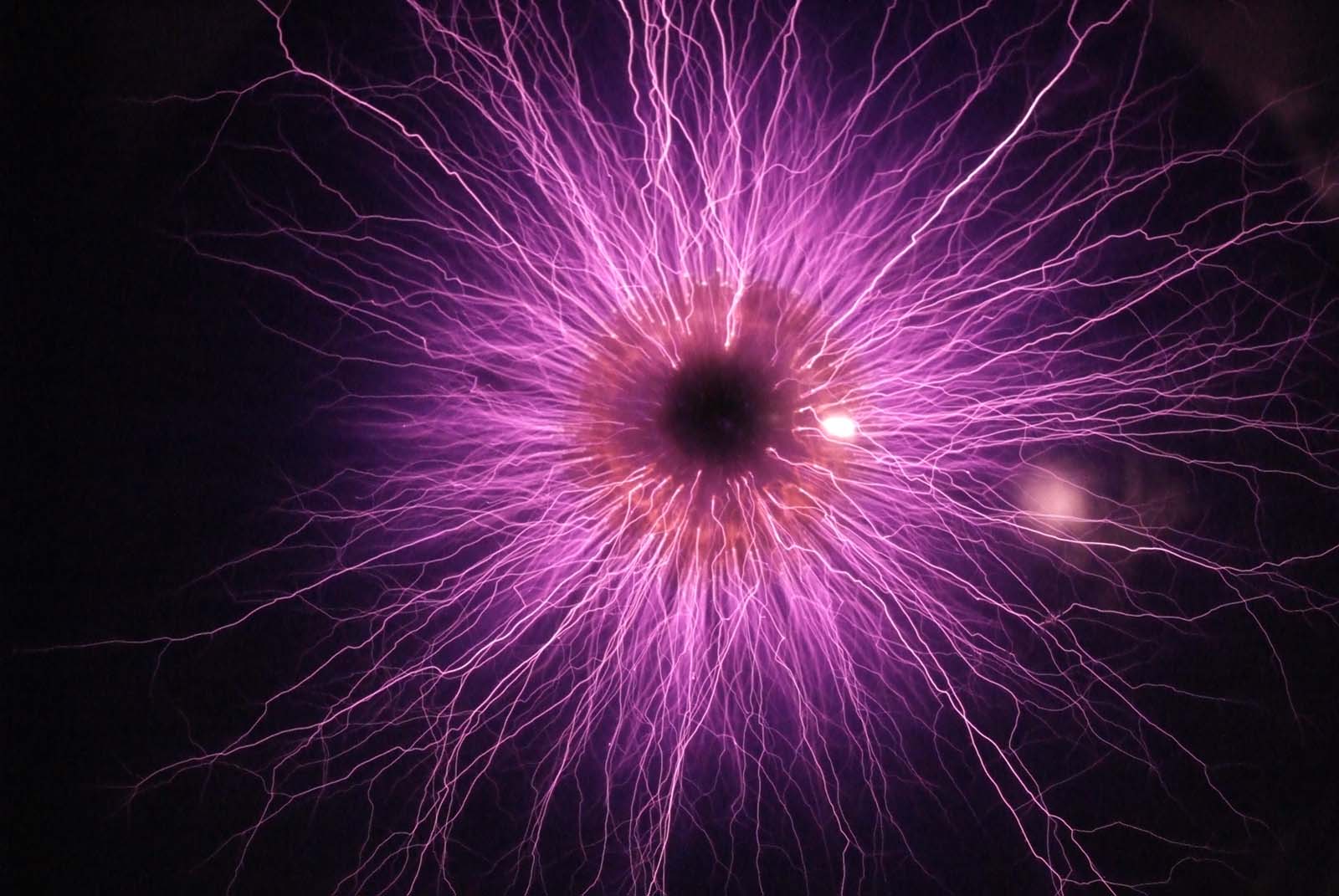
Streamers turn to sparks when a plate of glass of polycarbonate is laid
on top of the ball!
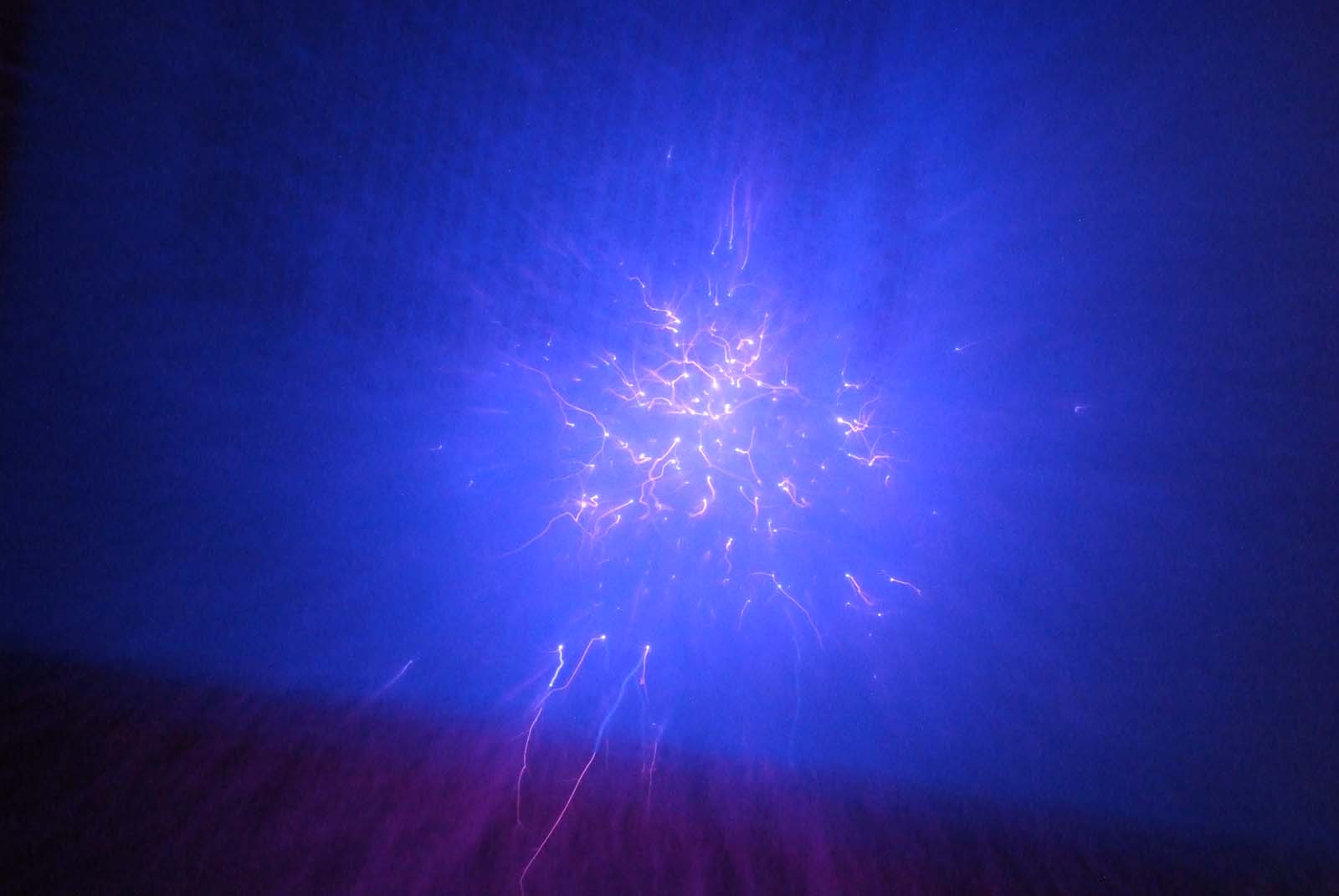
Normal white bond paper glows brightly under the influence of UV, and
can be tilted at various angles in the streams to study surface
changes...
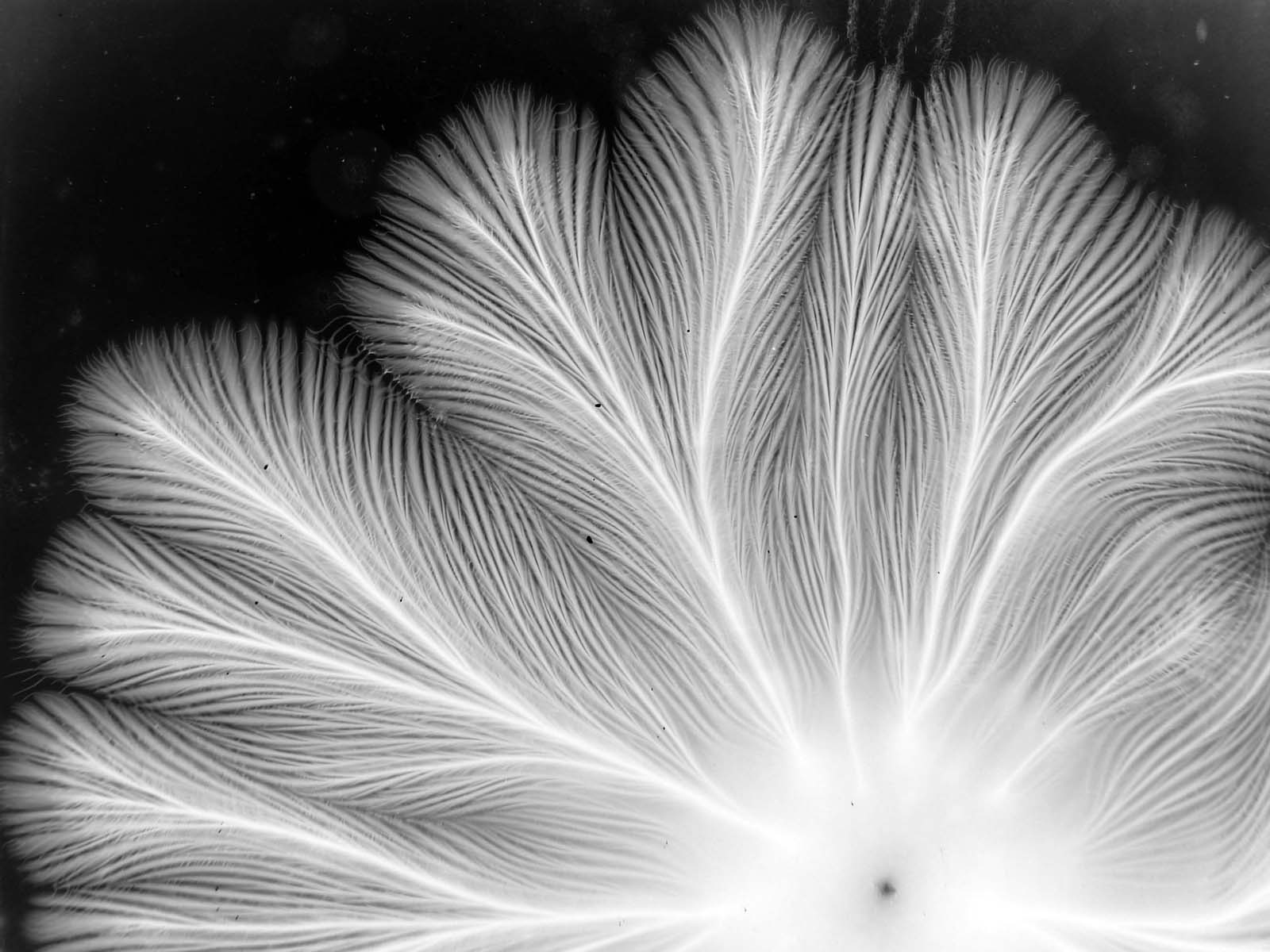
Original Kinraide negative showing Negative streamers
To study the negative streamers, I placed a sheet of glass or plastic
opposite the projecting charges from the ball terminal and simply placed
my fingers or metal objects on the opposite surface of the glass.
The results were beautiful negative formations, plume-like in
character. Kinraide mentioned in 1902 that he was unable to
photograph these directly, and had to rely on "withdrawing" the
energy from the plate
before the forms would appear. With this method, so simple and
elegant, the elusive negative forms can be produced and studied
independent of the positive streams.
In showing these photos, its my hope that Tesla enthusiasts will
appreciate that no matter how long into an invention's future we go there
are always new areas of exploration that might have otherwise
gone unnoticed. Much injustice has been done using Tesla's
name, and endless propagations of pseudo-science and plain nonsense is
filling the internet at a rapid pace.
The study of spark formations using relatively simple apparatus can offer
new insight to a variety of scientific topics: the generation of
short-wave UV Radiation; efficient
ozone generation; corona surface treatment on a large scale or assembly
line process; laboratory replication of Lightning, Sprites, St. Elmo's
Fire, Auroras, and other atmospheric electrical activity;
authentic uses (ie, to be FDA approved and used in the real medical
profession) of corona discharges in the treatment of skin disorders, the
study of complex surface charges and dielectric testing
of materials; new methods of obtaining static electricity from oscillatory
apparatus. In short, Kinraide's discovery makes the study of live
Lichtenberg Figures on a large scale possible and affordable.
In conclusion, some spark photography I have done directly on photographic
paper, made in 2005 - before much of the research into these phenomena
started!
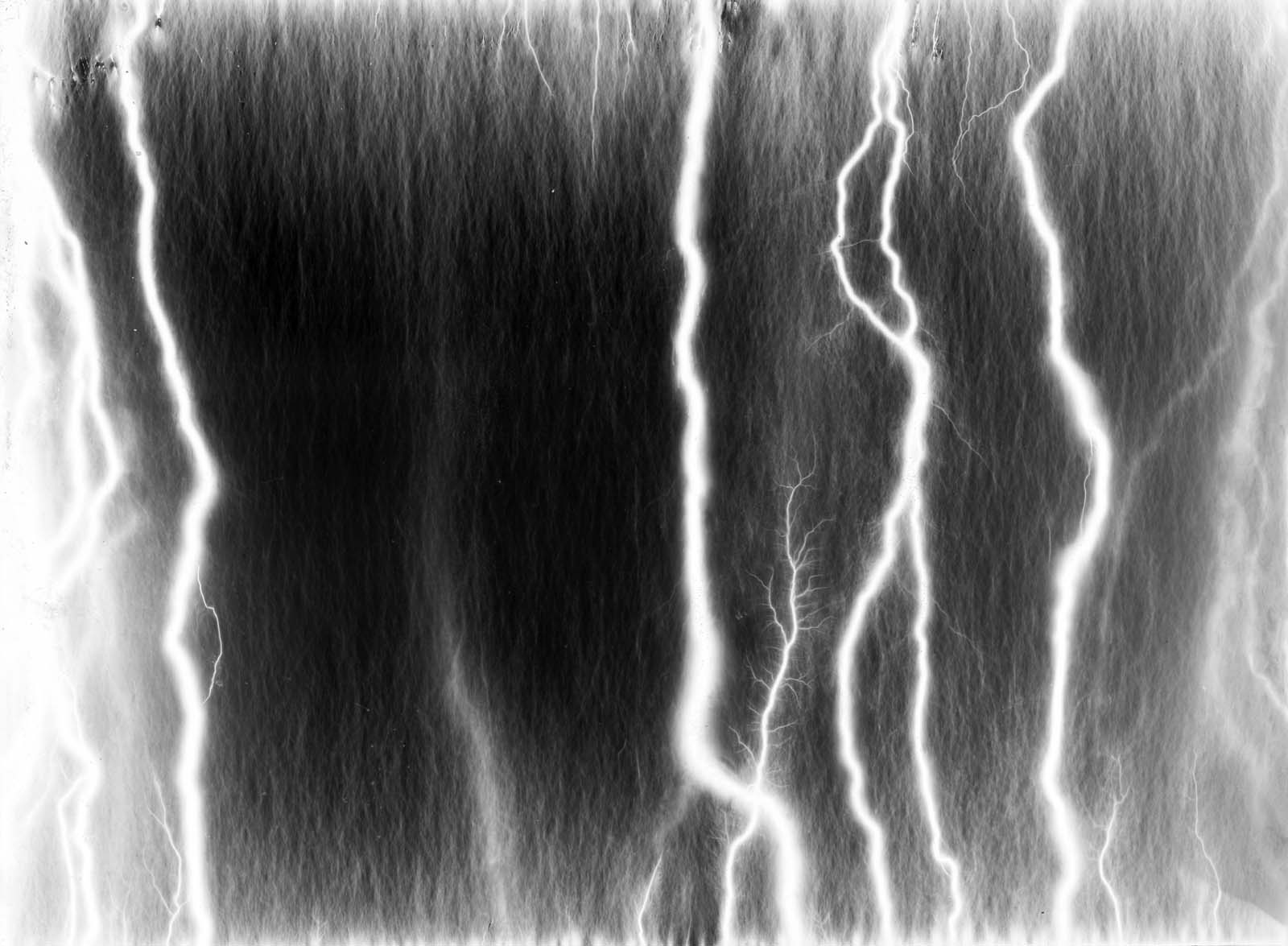
Sparks from the same machine between two plates of sheet metal edge to
edge
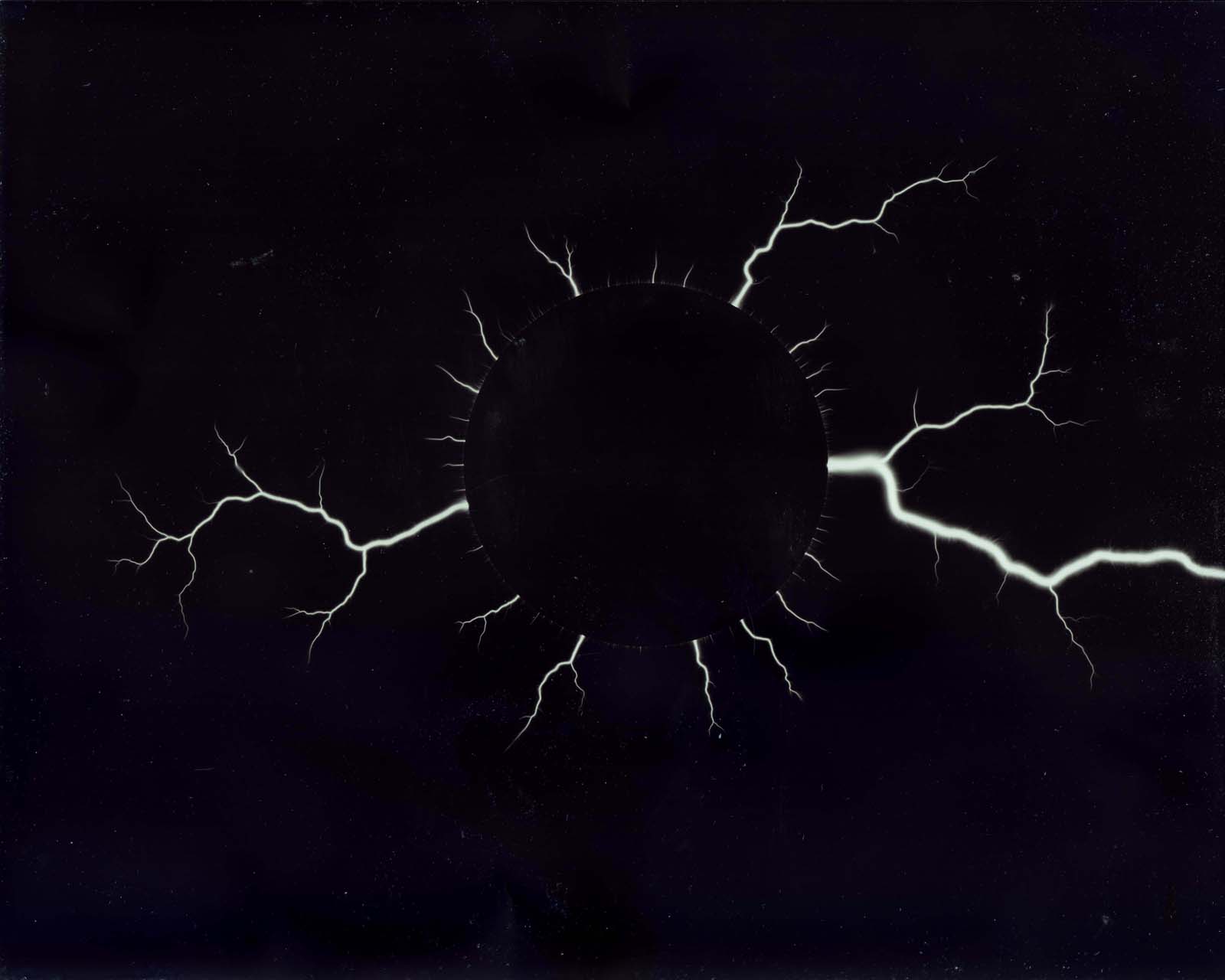
ca. 50 kHz Tesla Coil, fractional second photo made with the aid
of a fast-blowing fuse
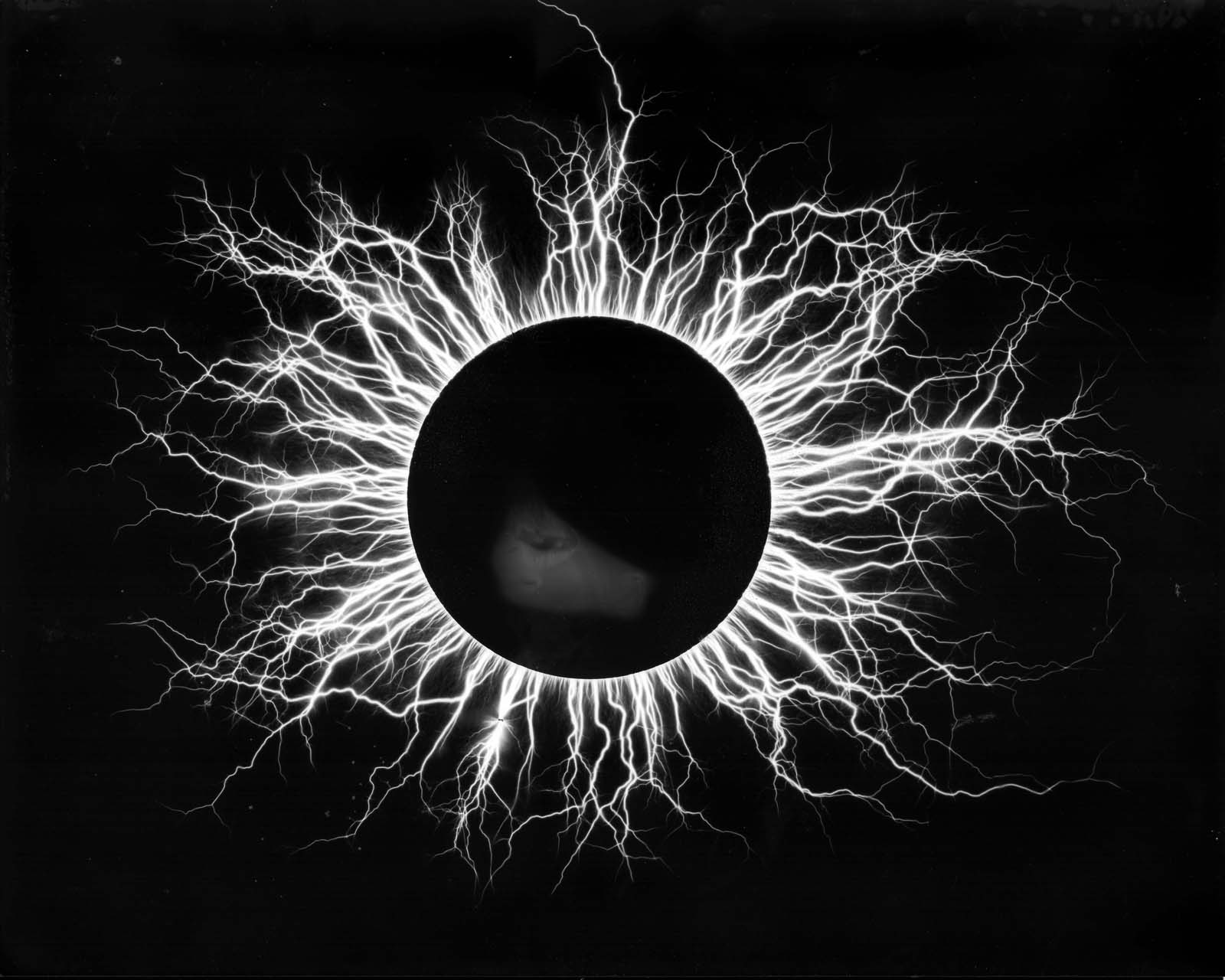
Same coil with ca. 1/2 second exposure
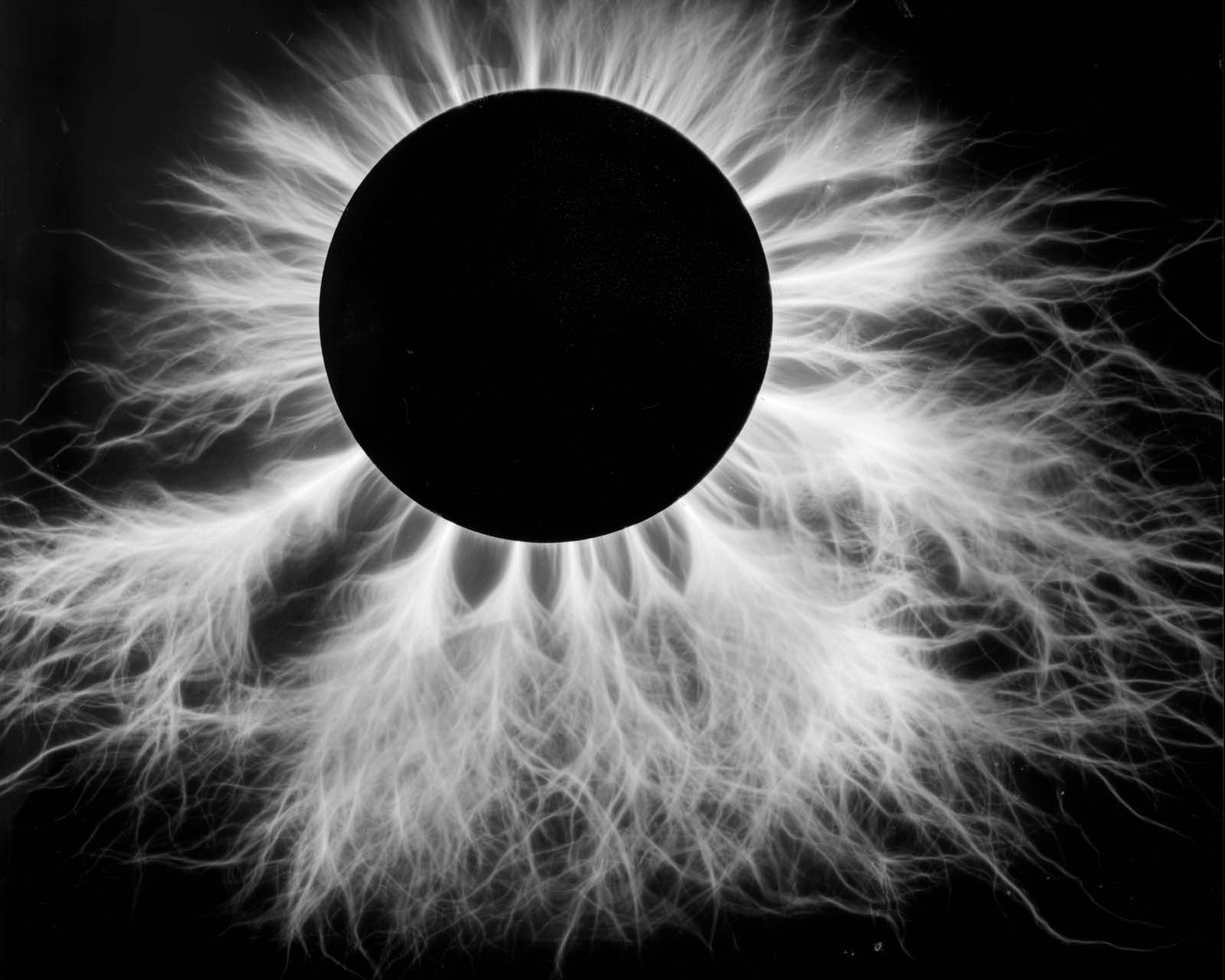
Discharge from a higher current higher frequency Pancake Coil
(C) Jeff Behary , 2012
(C) Daniel Cuscela, 2012
|